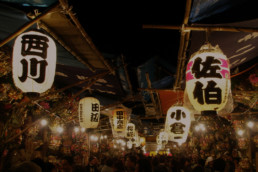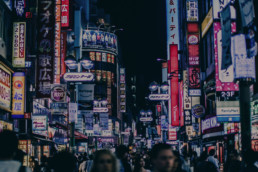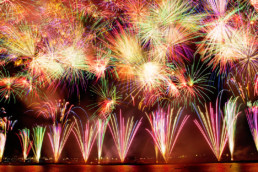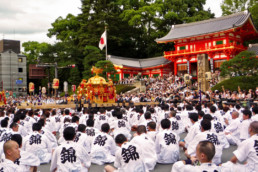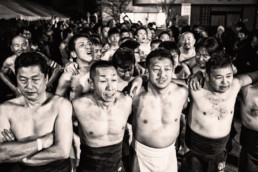Japan Travel: Yanaka Pilgrimage - Hidden Tokyo
Hidden Tokyo: pilgrimage in search of good fortune.

Photo credits: japaneseprints.livejournal.com
The relationship that Japan has with religion, and with spirituality in particular, is very peculiar. It is discrete, sometimes hidden, but it is an ever-present bond
made of everyday gestures and rituals. Sometimes, in particular occasions or in difficult moments, Japanese people pay a visit to this or that deity asking for protection and benevolence. Among the most revered deities in the whole country there are the 'Seven Gods of Fortune', in japanese Shichi Fukuji (七福神).It is therefore not unusual to find short pilgrimage routes in honor of these gods.
These seven deities arrived in Japan centuries ago and are the result of a slow process of assimilation. A process that saw Buddhism, Hinduism, Taoism and Shinto blend together. Walking through a fixed course reaching the temples of all the seven divinities, the pilgrim collects seven stamps or inscriptions to commemorate the visit.
These pilgrimages are more frequent during the first two weeks of the year. In fact, this is the period in which, according to ancient Japanese traditions, the seven deities land on the shore with their 'ship of treasures' distributing gifts and good fortune to everyone.
Only in Tokyo there are more than 20 such pilgrimage courses, and the one we want to talk about this time will take you on a journey of discovery through Yanaka.
Yanaka is a small pearl dating back to the Edo period, set among tall buildings, shopping streets and the famous Ueno park. Its ancient heart has been kept untouched, and is often the destination of many tourists who want to find in the great metropolis a taste of its past.
Pilgrimage through Yanaka

Photo credits: flickr.com - Patrick Kenawy
This path through Yanaka starts from Tabata station, easily recognizable because it is one of the stops on the Yamanote Line, which connects all the main touristic spots of the city with its circular route.
Your first stop will be the Tokakuji temple, a short walk from the station.
As this is the first temple of the pilgrimage, here you can buy the scroll representing the seven deities that will then be marked at each destination.
This temple houses Fukurokuji, a deity that, as the name suggests, is the god of wisdom, wealth and longevity. Often represented as a bald old man with a incredibly high forehead, he is accompanied by a crane and a turtle, both symbols of longevity. Sometimes a black deer is also present. His statue is placed in the garden at the back of the temple and is open to the public only at New Year’s.
Although the temple is dedicated to Fukurokuji, the first thing that will attract your attention at the entrance will be two Nio statues. These two statues stand guard at the temple also giving their protection to the sick who ask for their help. In fact it is believed that they have healing powers. If you suffer from some illness, buy the appropriate piece of red paper at the temple and attach it to the statue where you feel the pain. The deity will heal you.
Here, you can also buy a map of the walk, to make it easier for you to find the way.

Photo credits: flickr.com - realitycheck2002
The second stop is the Sei'un-ji temple, also known as Hanamidera. As the name suggests, the temple was, and still is today, a particularly suitable destination to see flowers blooming in spring. This is possible thanks to the cherry trees and the azaleas planted here in the 18th century. The temple is dedicated to the god Ebisu, the youngest of the seven, god of commerce and protector of fishermen and workers, but also of young children.
Just a few steps away, there is the third temple of the pilgrimage, the Shusei-in temple that hosts Hotei. This deity, also known as the laughing Buddha, is represented as a bald man, with a round belly and a good-natured smile, who is often surrounded by children. Hotei could be associated with our Santa Claus as he brings gifts that bestows especially to children.
The statue of Hotei in the Shusei-in temple is particularly beautiful. Stop to pray at it, but also to admire the painted murals that characterize the temple.

Photo credits: japantoday.com
A bit more difficult to find is the Choan-ji temple, your next stop.
Here finds his home Jurojin, deity of longevity. Because of the similarities they share even in they way they are represented, Jurojin is often identified with Fukurokuji. But here is also possible to find Itabi, statues erected to preserve the repose of the souls of the dead during the Kamakura (1185-1333) and Muromachi (1336-1573) period. The Choan-ji temple houses three of them dating back to this period.
After this temple, head to Yanaka Cemetery and your next destination will be the Tennoji temple. It will welcome you with a large statue of a seated Buddha dating back to the late 1600s placed at its entrance. But your main objective will be a small shrine on your right. Here is housed Bishamonte, the warrior god represented with a spear and a pagoda in his hands, symbols of his dual nature. He is the god of warriors who punishes the wicked, and the association with the peaceful preacher Buddha should not surprise you. Bishamonten, also known as Tamonten, is also the protector of the places where Buddha preaches.
The second to last stop of this pilgrimage is the Gokoku-in temple, home of the god Daikokuten, deity of wealth and crops, but also protector of the house and in particular of the kitchen. A particular note goes to a small stage in the courtyard in front of the temple used for representations in honor of the deity.
The last destination, perhaps the most beautiful one, will take you through the Ueno park to reach the Shinobazu pond and the Bentendo temple.
Benten is housed in this temple, goddess of the arts and music. This deity is said to be happier when surrounded by water, which is why the temple is near this pond, and her symbol is a lute. Benten is also the divinity of knowledge and wisdom so, those who wish to succeed at work or in an exam pay a visit to her.
Although the temple is just a modern reconstruction, it remains faithful to the original structure and is particularly recognizable thanks to its bright colors. Dominant are red, white and teal.
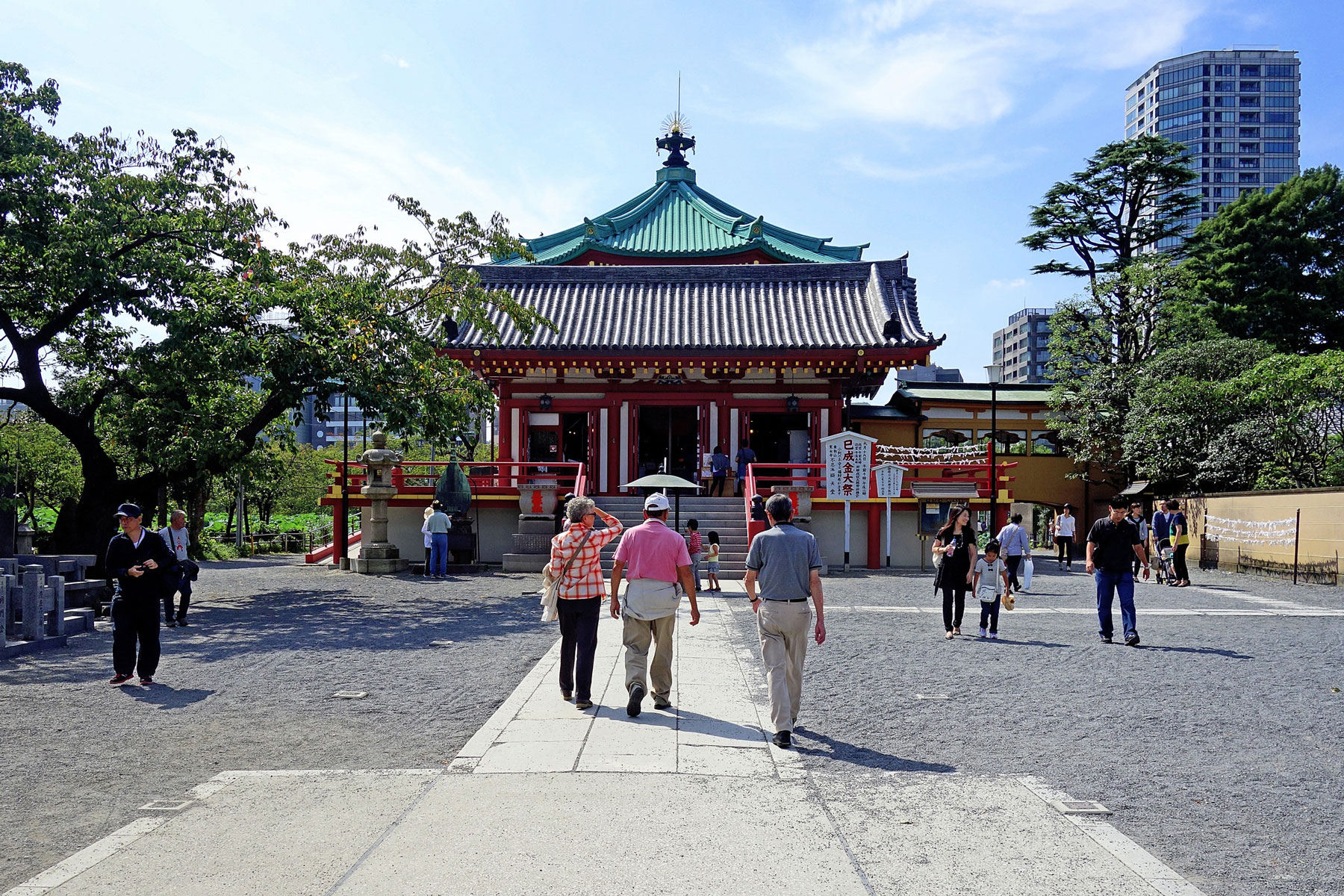
Photo credits: flickr.com - Toshihiro Gamo
Here the pilgrimage ends, but along the way there are plenty of distractions that will make your journey even more enjoyable.
Along the walk

Photo credits: Japan Italy Bridge
Along the way you will find a myriad of other small Buddhist and Shinto temples.
Take a stroll through the ancient district of Yanaka Ginza, just behind Nippori station, and stop to eat something at one of the many traditional kiosks in the area.
Just outside Yanaka you will find the small Kyooji temple where you can still see bullet holes on its central gate. These marks seem to date back to the battle of Ueno in 1868, during which the Imperial troops drove away from Edo the troops loyal to the shogun.
Yanaka cemetery will then give you a place to stop and rest. A place of peace that will surprise you even more during the cherry blossom.
And don’t forget the Ueno Park, a little ‘green jewel’ in the heart of Tokyo. A destination renowned for its wonderful cherry blossom and the famous Ueno Zoo with its pandas.

Photo credits: Japan Italy Bridge
In the park, among other temples, there is also the Toshogu shrine with its pagoda, that is dedicated to Tokugawa Ieyasu. Between April and May it will also be possible to enter the beautiful garden that houses a small but impressive peony collection, one of the most loved flowers in Japan.
There are also museums and traditional shops, on a journey to discover a Tokyo that is a little bit different from what we are used to, but certainly equally fascinating.
Japan Travel: Nikkō
Nikkō - The timeless town

Not far from Tokyo, there is a town that could be described as magical. This is Nikkō, literally "The town of sunlight”. Located in the mountainous region of Tochigi Prefecture, it is one of the most famous tourist destinations in Japan. Rich in historical monuments, it has been listed as an UNESCO World Heritage Site. Its most famous monuments are the Nikkō Tōshō-gū shrine dedicated to the shogun Tokugawa Ieyasu, and the Futarasan shrine dating back to 767.
The city is also surrounded by nature with mountains, hot springs and the Nikkō National Park where several beautiful waterfalls can be found.
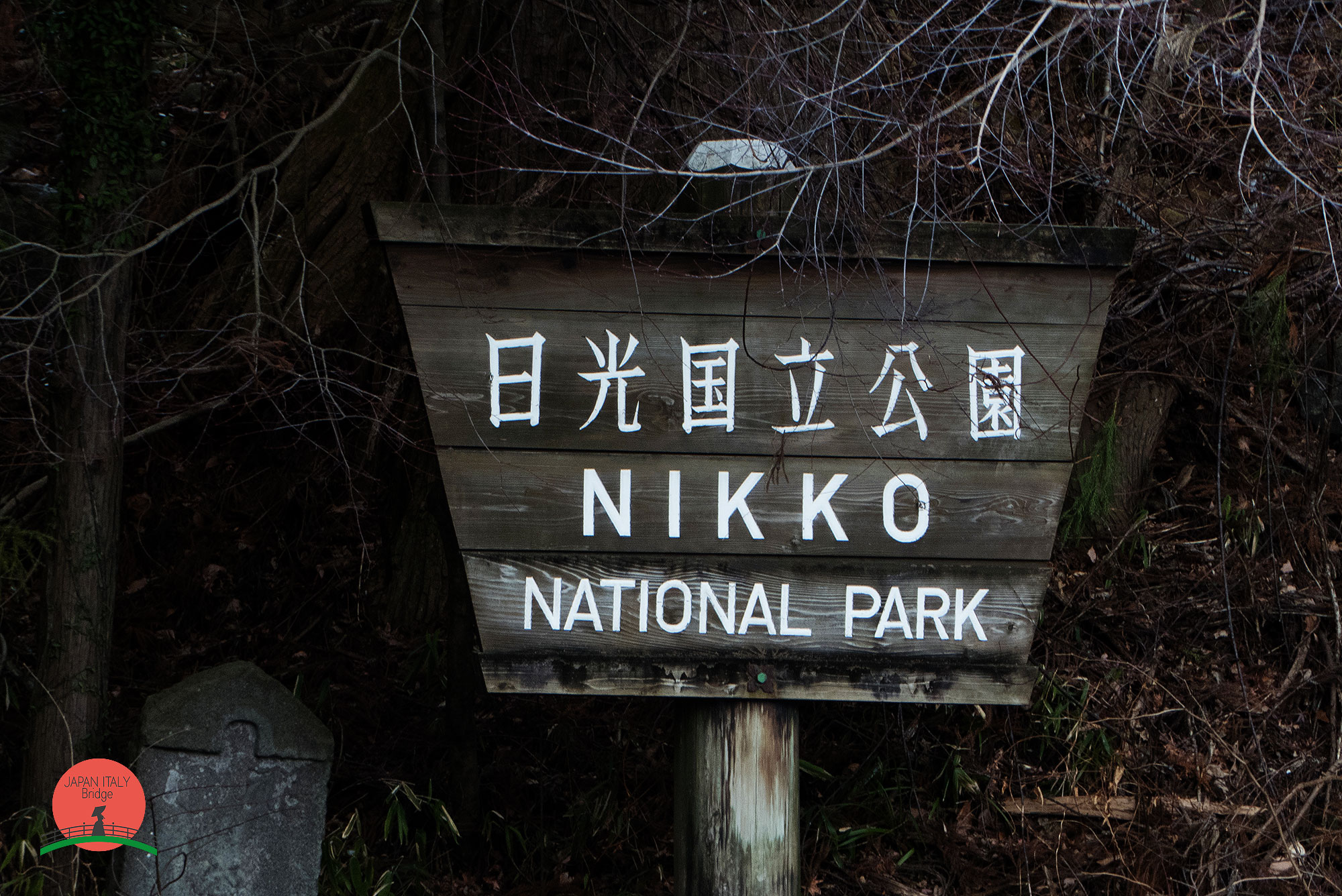
Between sacred and modern
On March 20, 2006, the old town of Nikkō merged with the city of Imaichi and the municipalities of Ashio, Fujihara and Kuriyama, resulting in the new city of Nikkō . Sacred and profane, a division that is even more evident thanks to the great "sacred bridge" Shinkyo, completely lacquered in red and that was originally reserved to the emperor and the shogun. Today, this same bridge is crossed by hundreds of visitors each year arriving at the Rinno-ji, the great temple best known for the "Three Buddha Hall".
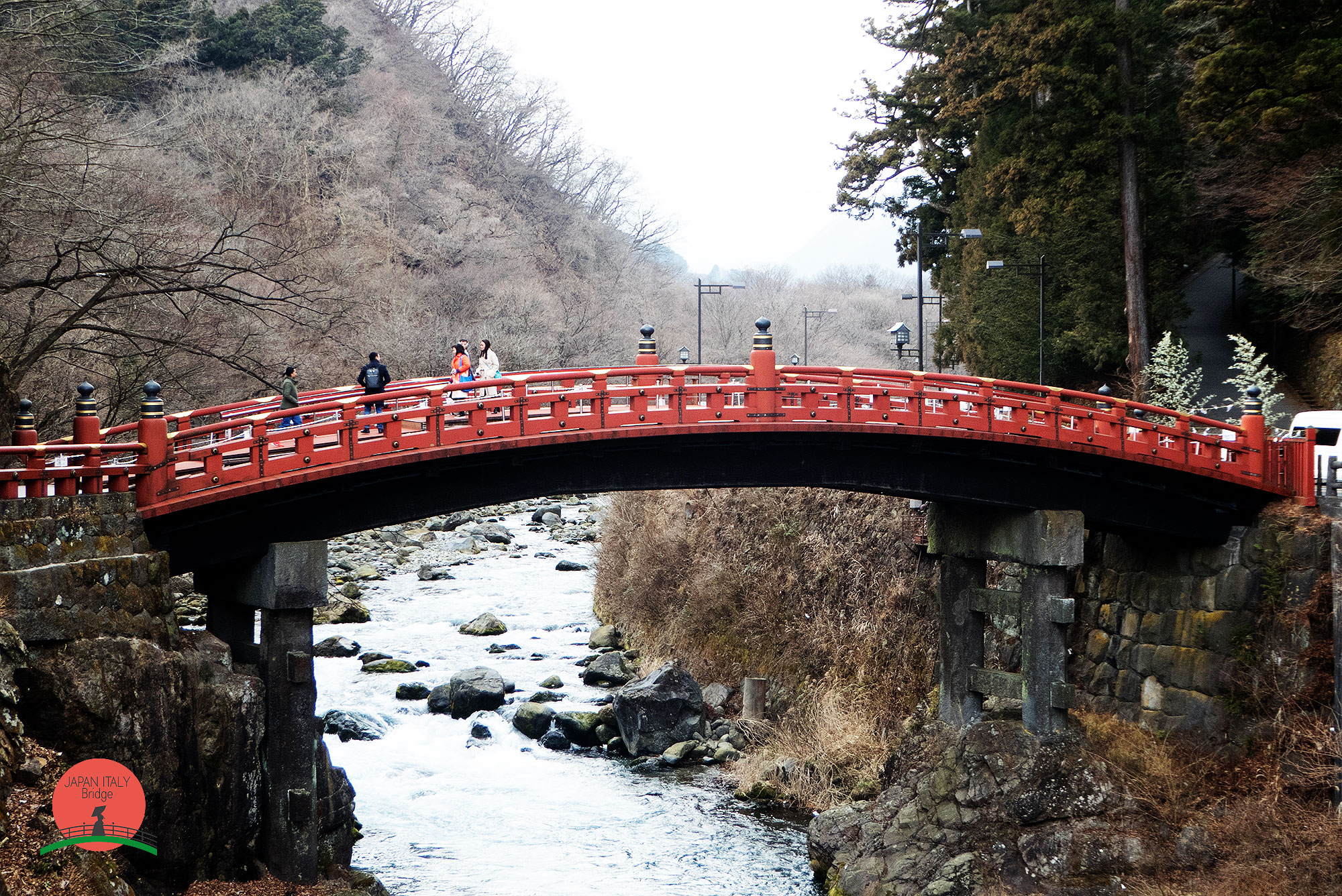
Monuments
Behind this temple there is the Tōshō-gu shrine where the great Tokugawa family established their Shinto shrine making it the most richly decorated temple in the country. More than 15000 artisans of the country participated in its construction and with its gildings, its bright colors, its sinuous lines, this place of worship is considered as one of the most beautiful examples of Momoyama architecture (1573-1603). Even more famous is the pediment of the sacred stables, genuinely minimalist and especially known by all the Japanese for the three little monkeys carved in the wood: Mizaru ("the blind"), Kikazaru ("the deaf") and Iwazaru ("the mute"). In fact, they symbolize the precepts of the Tendai Buddhist sect, inspired by Confucius: do not look at evil, do not pronounce it, do not listen to it.

If you have a whole day to explore the city, you can not miss the opportunity to visit the statue of the sleeping cat that marks the entrance to the tomb of Tokugawa Ieyasu. Subsequently, along the Daiyagawa river, you can find the Kanmanga Fuchi path, a sumptuous walk through the woods and the strange volcanic formations of Mount Nantai. At the end of this walk, dozens of statues of Jizō, protector of the children, await you where time seems to have stopped.

At a distance of 30 km from there, you can then find the magical Chūzenji lake, where you can take a boat trip to the spectacular Kegon no Taki waterfall and the Yumoto Onsen hot springs.
A city between history and modernity, between mountains and enchanted lakes, a small pearl of history not far from the metropolis of Tokyo. Here you can still perceive the classic feeling of Japanese tradition in its fullness. A destination not to be missed for all those who love this nation and its culture.
How to get here
The train is the quickest and most convenient way to reach Nikko from central Tokyo.
Tobu Line - Asakusa
From Asakusa Station, easily reachable by metro from all the main districts of Tokyo, you can take the Tobu line which offers rides to Nikko every hour. The cost per round trip is about 2800 ¥, the ride takes about 2 hours and is by far the cheapest option. The JR Pass is not valid on this route.
info: Tobu Line website
Limited express - Shinjuku
The JR limited express connects Shinjuku station directly with Nikko, the cost of a round trip ticket is 8000 yen. Unfortunately, the JR pass does not completely cover the route so, it will be necessary to pay an additional charge. To book your seat just consult the JR East website.
Info: JR East website
JR Shinkansen - Tokyo
This is the fastest and most convenient way to get to Nikko, especially if you have a JR Pass. It is possible to take the JR Tohoku Shinkansen from Tokyo station, but you will have to change at Utsunomiya and continue on the JR Nikko Line. The cost of the round trip is 10000 ¥, not recommended for those who do not have the JR Pass..
Info: Hyperdia website
Japan Travel: Akihabara
Akihabara
 Photo credits: travel.gaijinpot.com
Photo credits: travel.gaijinpot.com
Akihabara, known as Tokyo's Electric Town, is located in Chiyoda's special district, Tokyo.
Lively and bright, all electronics stores, computer stores, videogames, and everything related to the world of anime and manga are gathered here, in this small district.
Akihabara surely is a center of attraction for otaku that can be found at every corner of the district. おたく/オタク is a Japanese word that since the 80s is used to describe the Japanese subculture of obsessive enthusiasts of manga, anime, and other related products. In the West, this term is used to indicate both Japanese anime and manga enthusiasts, and people passionate about Japanese products in general, without the negative connotation.
Akiahabara itself is not an essential tourist destination but, if you are particularly fond of electronics it definitely transforms into a place not to be missed.
Cult spots of the district
 Photo credits: wowsabi.co
Photo credits: wowsabi.co
Strolling around the ”Electric Town” you might come across a number of stores and buildings you should not miss, like the Yodobashi Akiba, a shopping mall that with its 9 floors is the largest in the world. We can find the Animate store that offers 8 floors full of anime, manga and video games merchandise, or the Mandarake also dedicated to manga and animes though second-hand. And more, the Super Potato, a 4-story store that offers a wide selection of vintage video games and a small 80s-style arcade.
And if you are looking for something you cannot get anywhere else, you will most likely find it where everything started: at Radio Kaikan!
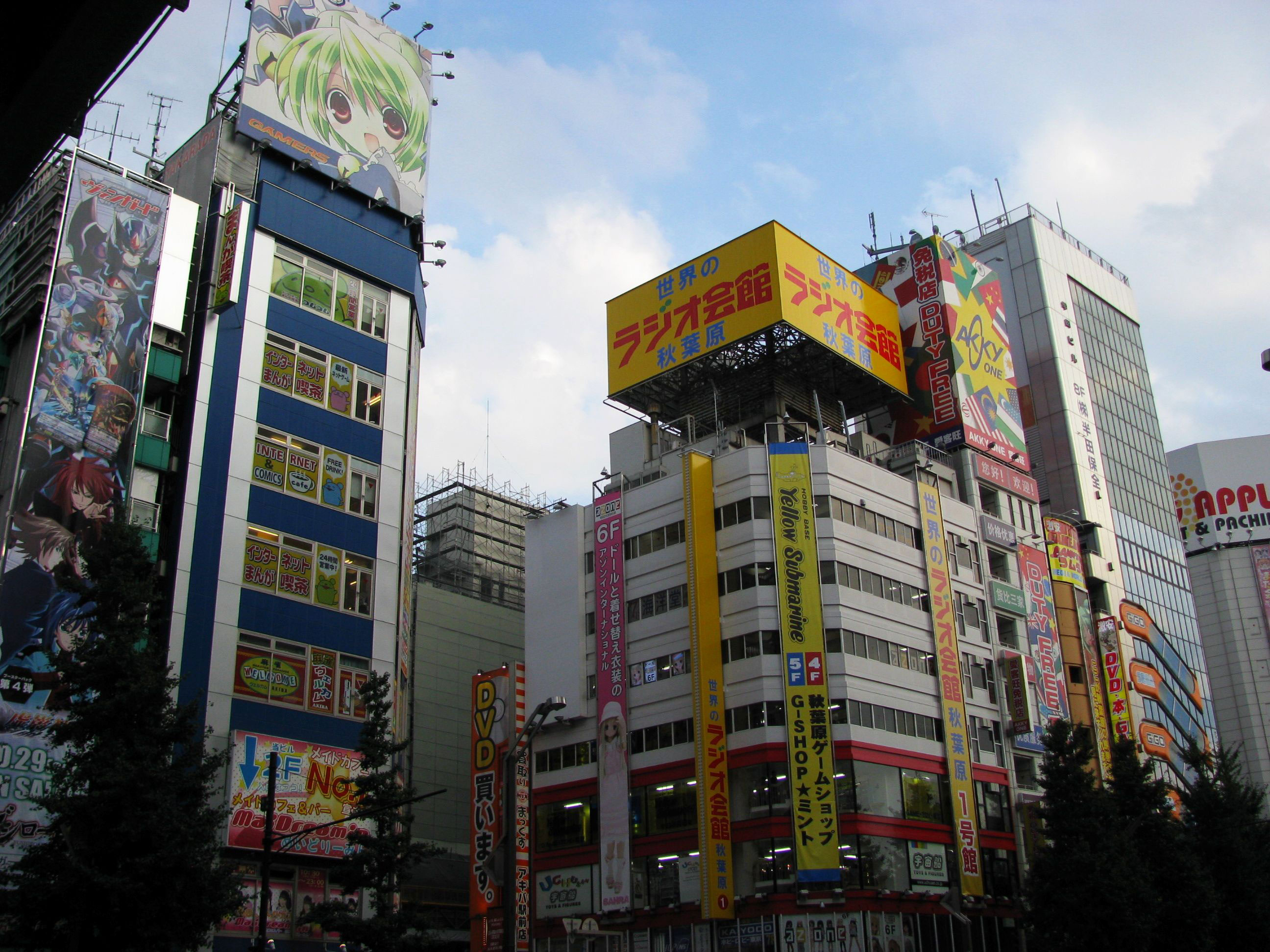 Photo credits: Google image
Photo credits: Google image
Opened in 1962, it was the first store to provide television sets, washing machines and fridges for the citizens. It evolved over time to become an otaku paradise. In 2011, after the big earthquake, it was razed to the ground, but then rebuilt to remain a reference point for anime enthusiasts.
The best entertainment place is surely the Maidreamin Maid Cafe, an explosion of colors, shows and “kawaii” themes. This is the perfect place for those of you who want to smile a bit and see what a maid cafe is, even though it is a little bit expensive. On the other hand, if you are a fan of Gundam, there is the Gundam Cafe that right at the entrance offers a small take-out for those who don’t have time to stop inside. Here you can order a taiyaki (traditional fish-shaped Japanese cake) with the shape of Gundam and other Gundam-themed dishes!
 Photo credits: akibacity.tokyo
Photo credits: akibacity.tokyo
The big green sign
 Photo credits: mishajoh.blogspot.it
Photo credits: mishajoh.blogspot.it
When we say “sexy shop” we immediately think about something “dubious”, “shady”, something to stay away from. Instead, the Pop Life Department M’S, located on the corner right outside of Akihabara station, is attractive and funny. Very clean and neat, among the shelves of M’S you can find unimaginable objects! Sets of di sexy cosplays, adults DVDs and many of them are niche products, all the latest technological inventions for “personal use” and also lifestyle products. Many visitors are simply curious tourists or young couples. Strange thing is that in the basement there are 2 vending machines that sell “used” underwears!
 Photo credits: Google image
Photo credits: Google image
Japan Travel: Shinjuku
Shinjuku
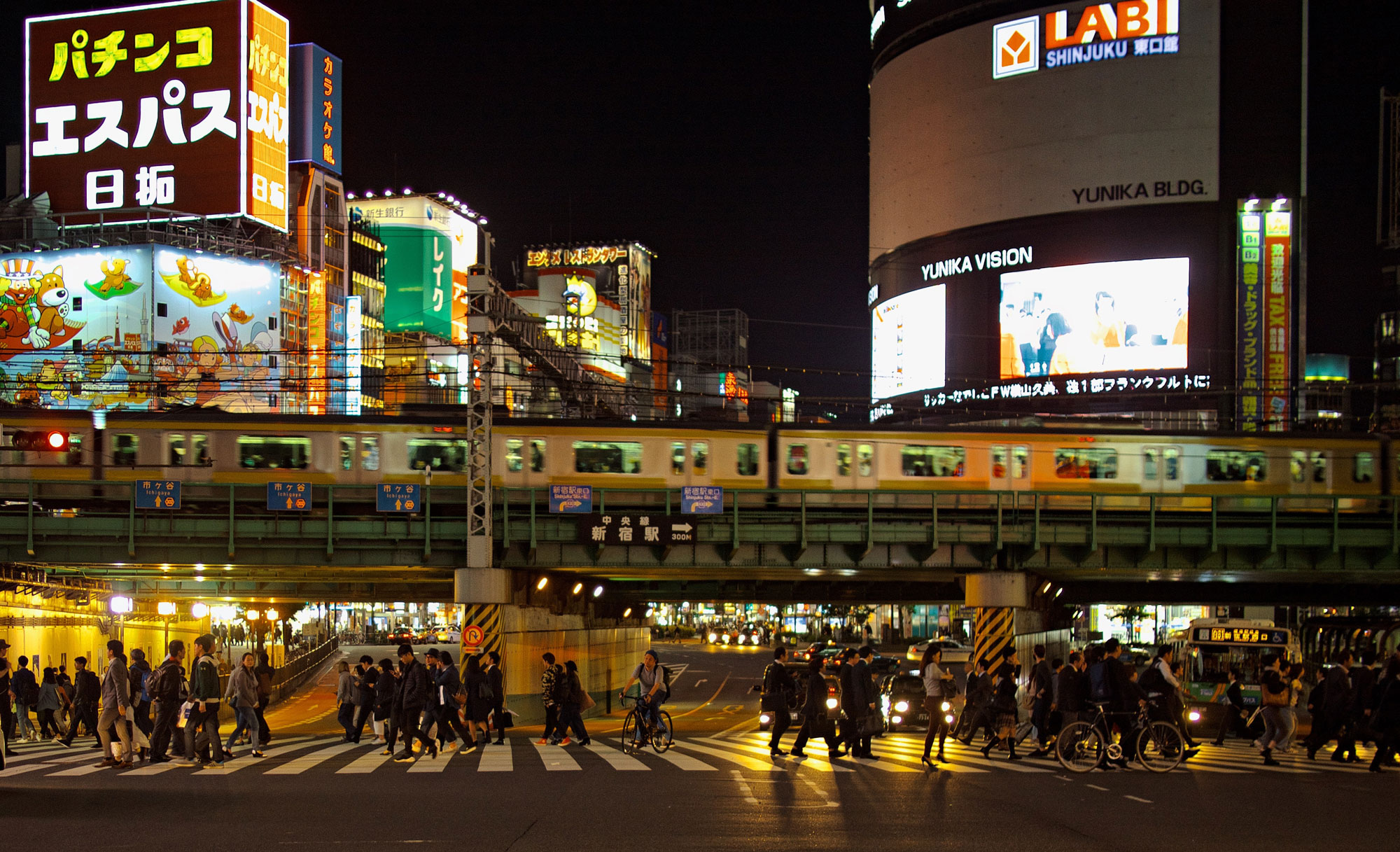
Photo credits: Sergio Rola
Shinjuku (新宿), important commercial and administrative center with the world's busiest railway node, is part of the 23 special wards of Tokyo.
Not just trains, Shinjuku is also one of the major stops for long-distance buses. The Busta Shinjuku, a large terminal, is located right at the top of the railway station.
Taking the station as a reference point, west of it, you find yourself in the Skyscraper District. Here are located the highest buildings in Tokyo including luxury hotels and the twin towers of the Tokyo Metropolitan Government building. Designed by the famous architect Kenzō Tange, it’s here that the political and public administration of the city is handled. Its towers are 243 meters high and the observation bridges, located on the 45th floor, are open to the public for free.
Right from those observation bridges, one can see the Mode Gakuen Cocoon Tower, a skyscraper located in the financial district of Nishi-Shinjuku. 203 meters high, consisting of 50 floors with three schools inside: a fashion one (Tokyo Mode Gakuen), design one (HAL Tokyo and Shuto Ikou) and a medicine one. The architecture, also designed by Tange, gives to the skyscraper a cocoon shape created by the twisted white aluminum tubes (curtain wall) that rise diagonally.

Photo credits: Google immagini
Shinjuku is not only modernity but also houses one of the largest and most enjoyable parks in Japan: the Shinjuku Gyoen, where cherry blossoms is renowned for being among the best in the country. The park was opened to the public in 1949 after being the Garden of the Imperial family since 1903.
Shinjuku’s districts

Photo credits: Gor Badoyan
Among the most famous and discussed neighbourhoods, here is Kabukichou, located northeast of the station. It is the largest red-light district in Japan, and perhaps it is for this reason that the entrance is announced by a great red light sign. The history of this district is really curious: its name derives from a kabuki theater that was never built. Since 1872, fifth year of the Meiji Era, when laws governing relations with geishas and prostitutes were revoked in Japan, Kabukichou became the main red-lights district of Tokyo. Subsequently, laws against prostitution became stricter and after the Second World War the district was subjected to some attempts to change its image. It was then made an attempt to bring here Ginza's Kabuki-za theater, destroyed by a fire, but eventually the theater was rebuilt in Ginza, while in Kabukicho just kept the name.
Later on, another theater was built in Kabukichou, the Koma Theater, located in a building that contains some bars and nightclubs.
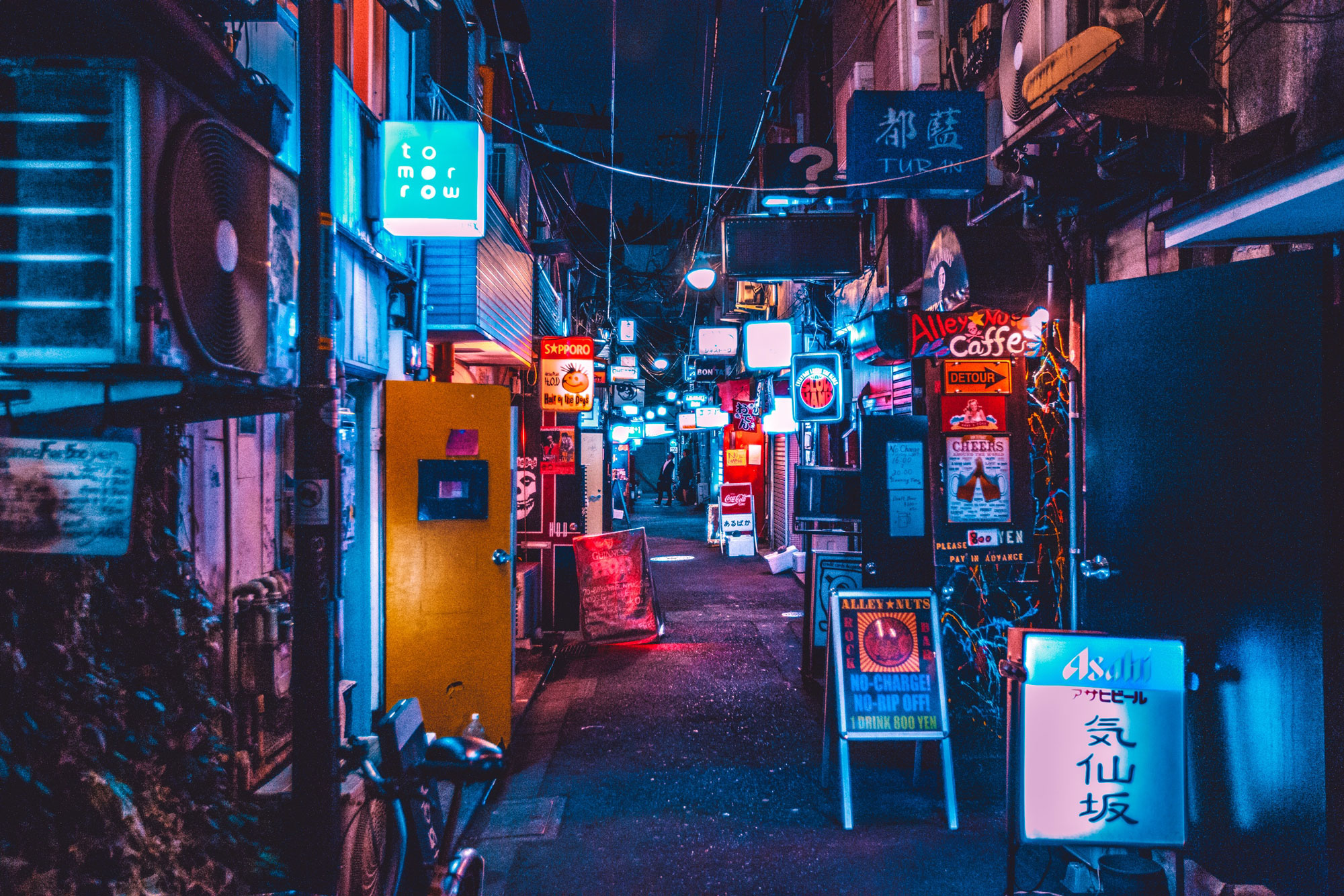
Photo credits: Benjamin Hung
Kabukichou never sleeps and this area boasts numerous restaurants, bars, nightclubs, "love hotels" and a variety of red-light structures for all sexes and orientations. Walking down Kabukichou’s streets can be risky in terms of expenses. Prices are exorbitant as everything is handled exclusively by Yakuza, one of the reasons why Kabukicho is also one of the safest neighborhoods in Tokyo because there is an attentive control over the various activities. Right here, in a maze of narrow alleys we come across the Golden Gai (the Golden Street) where a series of very small and peculiar bars peek out. The seats inside are limited, 2 to 5, and may be often located in basements as well! Moving around among them, you can hear loud laughs and if you spy inside you may spot eccentric people, writers, directors and some curious tourists. These small places can also have a theme, but in each of them what you can always drink is the yamazaki, a particular Japanese whiskey.
Out of the Golden Gai, we find Ichigaya, headquarter of the Ministry of Defense. Okubo, filled with Korean stores selling traditional food and many classical gadgets of the Korean pop culture. There are also Korean-themed bars, red-lights clubs and restaurants. Shinjuku ni-chome, is Tokyo's gay district, and finally Takadanobaba. The latter, is an area mainly frequented by students from the nearby Waseda University and Gakushuin University, there are preparatory schools and entertainments, and many bars and Izakayas. The Izakaya, consisting of the words "i" (sit down), saka (sake) and ya (shop), is a typical Japanese restaurant that sells drinks accompanied by food, a kind of pub.
The symbol of Takadanobaba is the "Big Box", a large box-shaped building next to the station.

Photo credits: Google immagini
Sacred and profane

Photo credits: Node Reaver's Blog
It sounds incredible, and yet it is right among Shinjuku’s skyscrapers that a space of peace and prayer opens up: the Shinto Temple Hanazono. It was founded in 1600 and is often visited by businessmen as the temple is devoted to the gods of economic success. It is almost a fundamental stop for tourists who, having walked around the chaotic Shinjuku, want to find some rest and, every Sunday, look around the antiques market. There are many festivals and religious events that take place at the Hanazono, the main one is held the last weekend of May, the Jinja Reitaisai. On this occasion there is a modest procession in which the small mikoshi is carried by the worshippers. Outside the temple 100 stands of every kind crowd the surrounding space offering a perfect interweave between sacred and profane.

Photo credits: Google immagini
Japan Travel: Shibuya
The Dynamic Shibuya
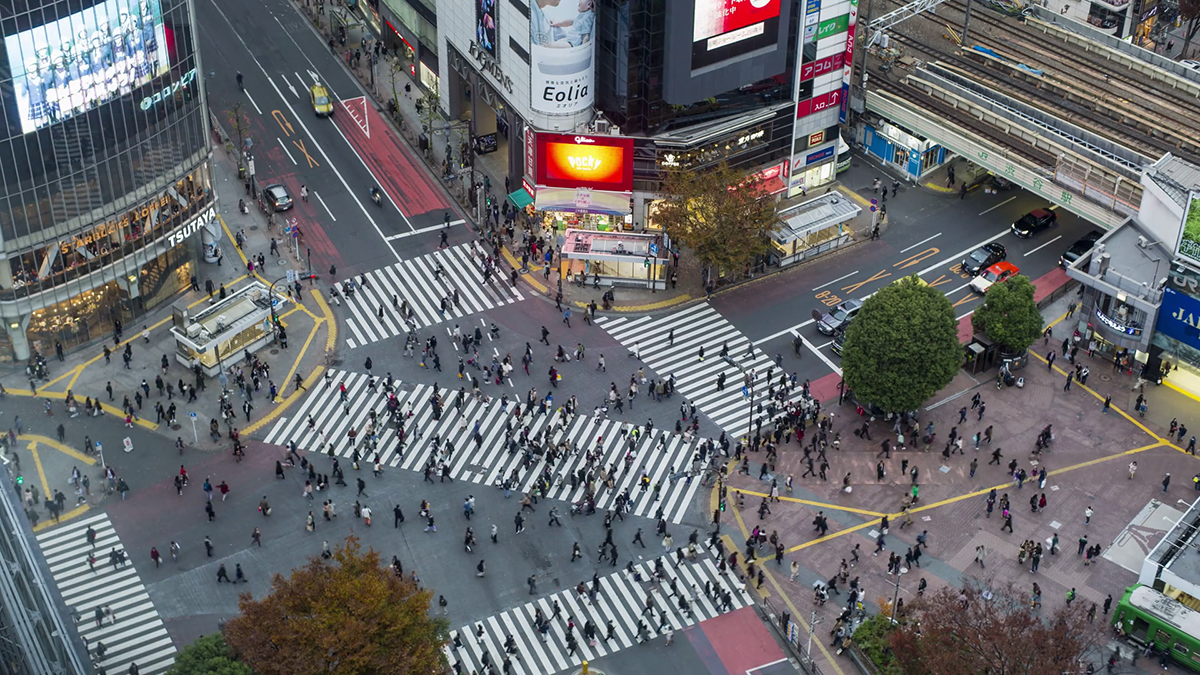
Photo credit: Google
Shibuya (渋谷区 Shibuya-ku), known as the most dynamic area of the city, is one of the 23 special wards of Tokyo. It develops around the area of the Shibuya Station, one of the busiest stations of the capital, that opens to the Shibuya Scramble Crossing, the most crowded street-crossing in the world.
All the buildings are covered by big screens that illuminate the whole ward as the sun sets. Streets are full of stores like the 109 (Ichi-maru-kyū), the iconic department store, and in particular music stores, restaurants and the famous “love hotels”. These can be found mainly in the so called Shibuya’s Love Hotel Hill. To make it all the more distinctive there are the young people leading the art of cosplay and….. well, Shibuya in one of the wards in which the Yakuza is more active!
If you don’t know what the Yakuza is, well the mystery is soon solved. It is the famous Japanese criminal organization divided in many different groups called ‘kumi’ or ‘bōryokudan’ (literally ‘violent group’) according to the legal terminology. It has its roots back to the Edo Period.
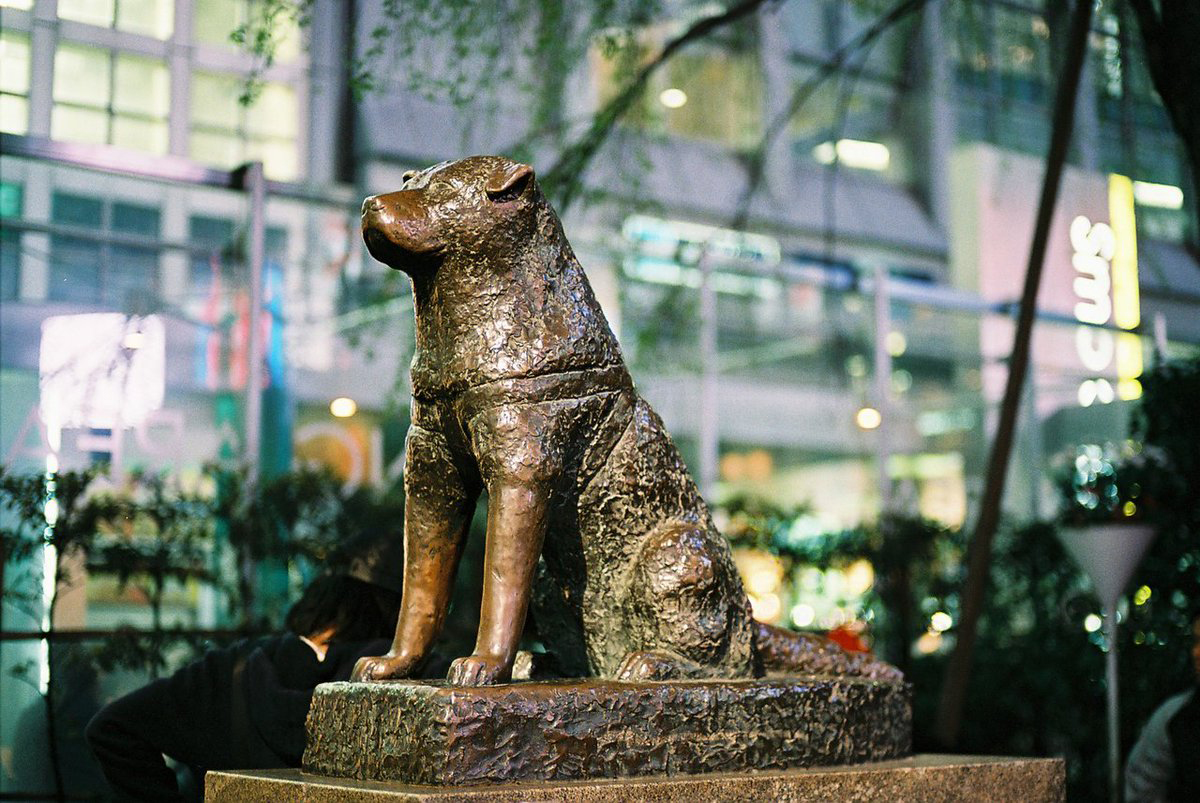
Photo credit: fotopedia.com
Yet, one of the main symbol of Shibuya is the monument dedicated to Hachiko, the dog that became famous for his loyalty to his owner, Hidesaburō Ueno. Unfortunately, the statue is just a reproduction of that original one that was lost in the Second World War.
One ward, many curiosities
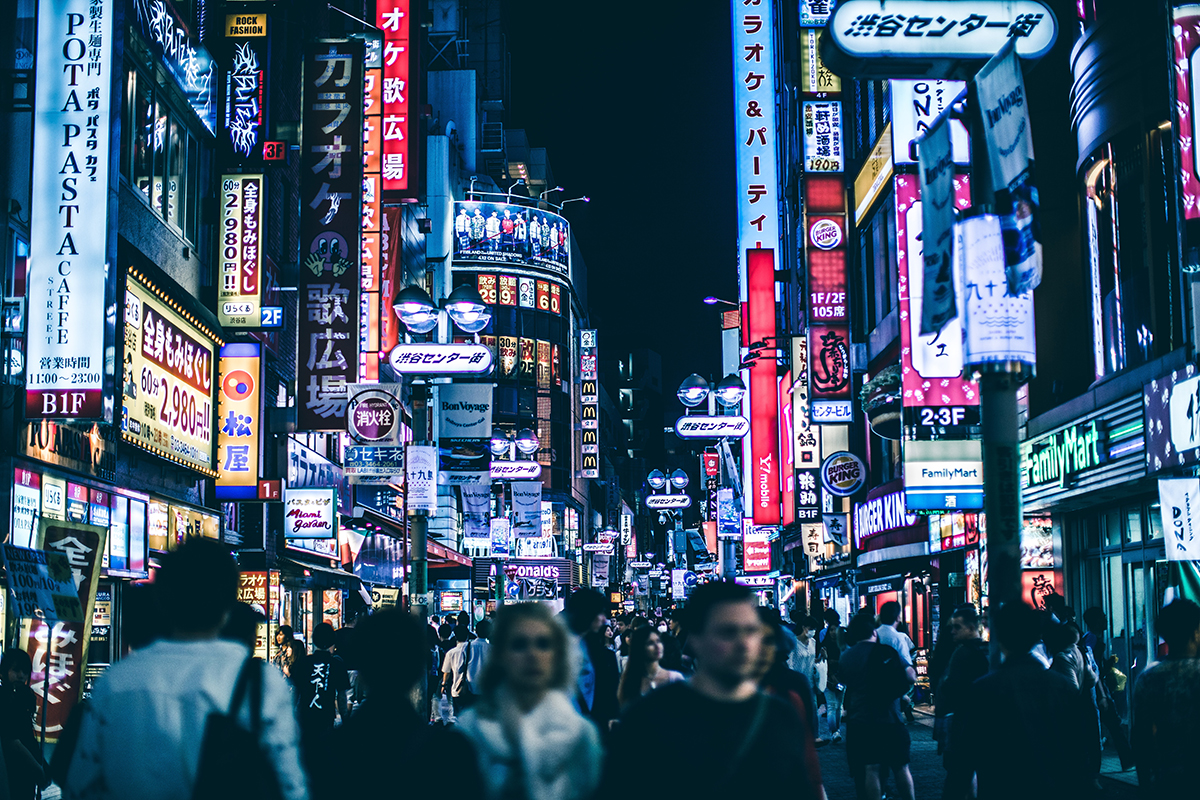
Photocredit: AndreBenz
Surely the name “Shibuya” is known to everyone. Those who love animes must have noticed that, for example, in Super Gals! there are many references to it. Not to mention that the protagonist has the habit of sitting on the statue of Hachikō to free her mind from all her thoughts! In the Digimon series the train for the “Digiworld” departs right from the Shibuya station. But its not only in animes that these kind of references can be found. In the Nintendo DS video game The World Ends with You, you have the chance to walk Shibuya’s streets faithfully reproduced in all their symbol places.
Last but not least, its right here that the musical genre of the Shibuya-kei was born as a fusion between electronic and pop music, and part of the J-pop genre.
Harajuku District
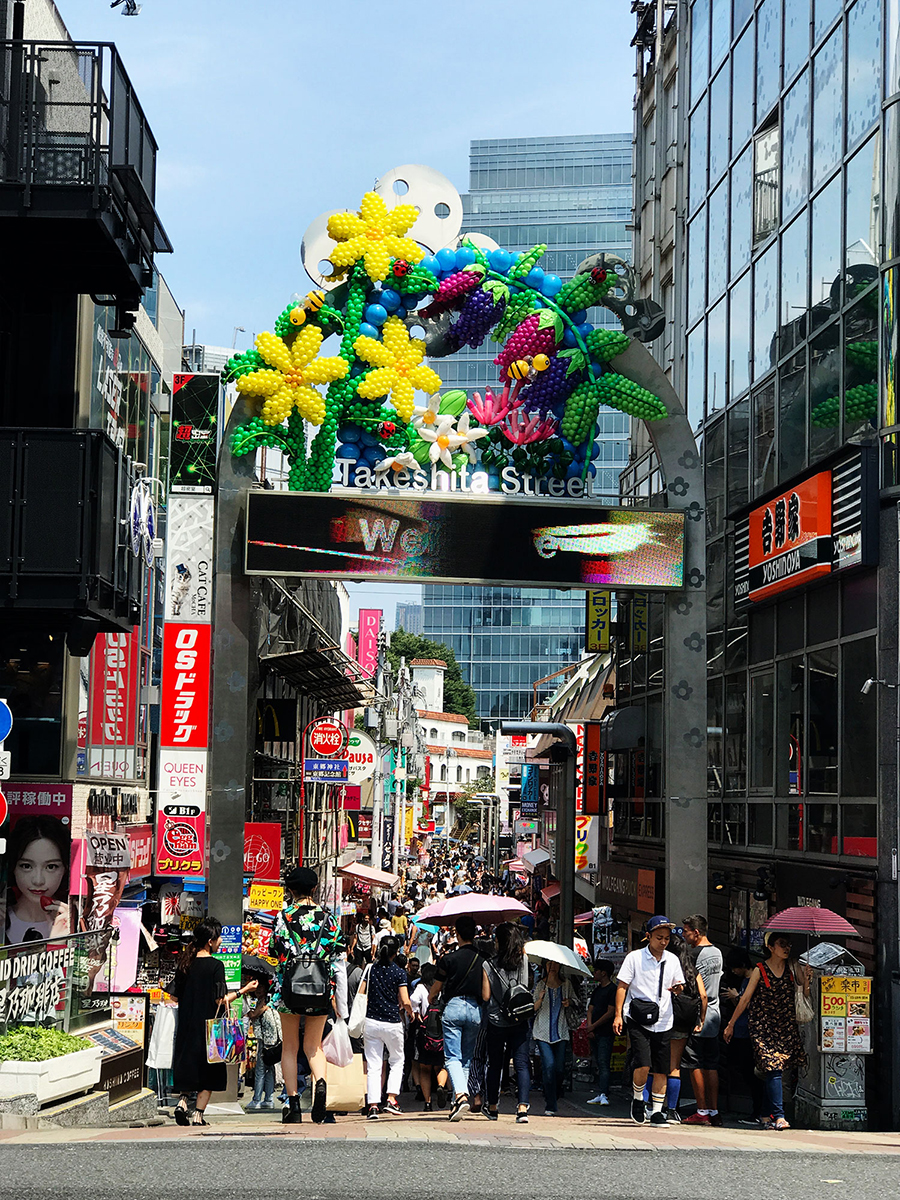
Photo credit: JAPAN ITALY BRIDGE
Harajuku (原宿 "meadow lodging" literally) is best known as the center of the Japanese extremely innovative youth trends. Two are the main shopping streets of the area, Takeshita and Omotesandō. The first one is dedicated to youth trends and is full of stores with many lolita, visual kei, rockabilly, punk and cyberpunk style items. Omotesandō, on the other hand, “Tokyo’s Champs-Élysées”, is dedicated to stores like Louis Vuitton, Chanel, Prada and Tod’s, just to name a few. The young girls that crowd Harajuku’s streets are identified as Harajuku girls. They are teens dressed according to many different styles, often very different from each other, but all with a distinguished eccentricity and very colorful. They are expressions of various subcultures, lolita, ganguro and kogal among the others
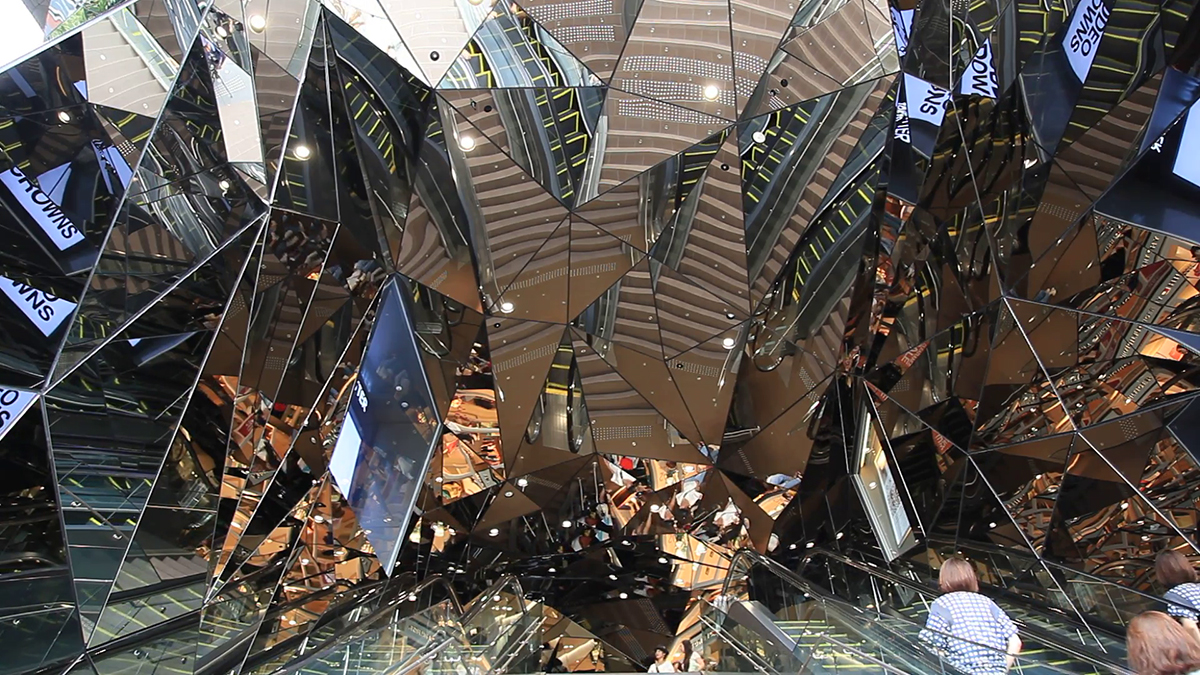
Photo credit: Google
Visual Kei was born here
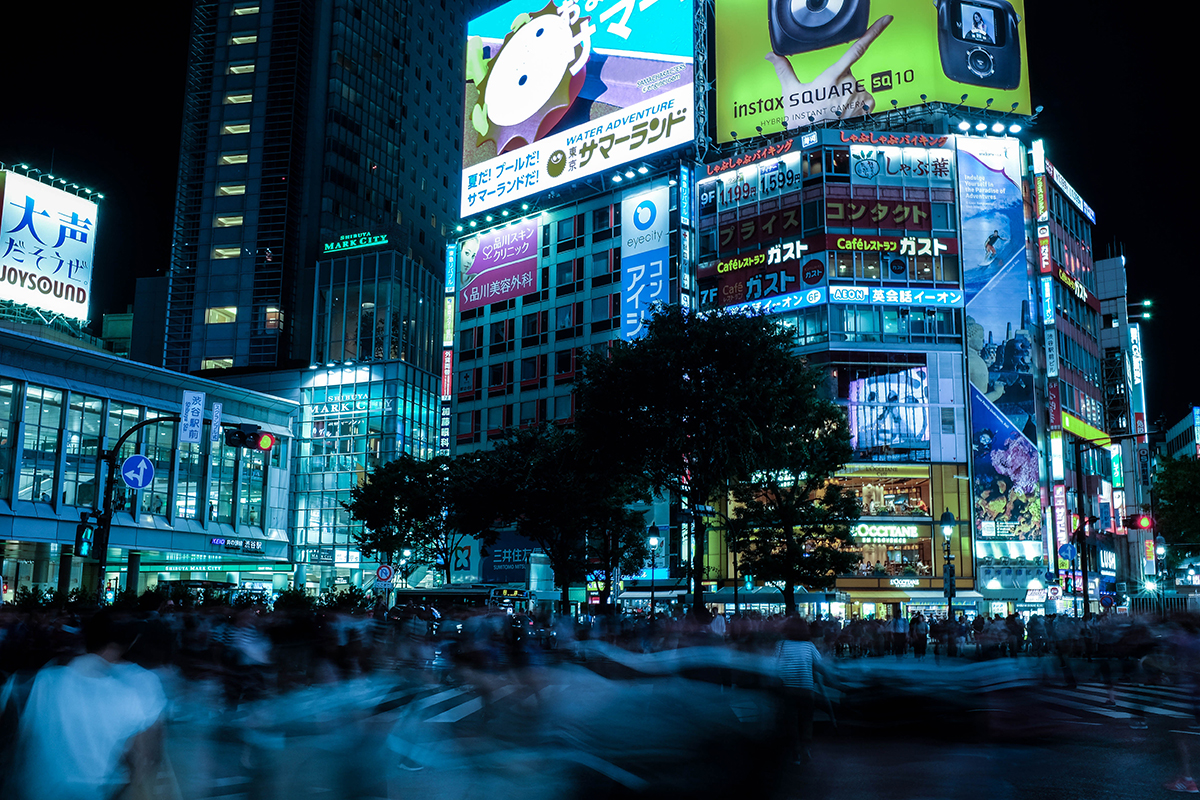
Photo credit: Alex Knigh
The musical genre of Visual Kei – from the English word visual and the Japanese word kei (系, “style”) – that was born around the end of the 80s, developed around this ward. The core of this genre is its aesthetic dimension. In fact, its various music bands distinguish themselves with the great theatricality and attention for the visual and scenographic aspect. One of the most distinctive elements is the exclusive presence of male musicians. This has its roots in the traditional Noh Theater where men play female roles as well.
Curiously, many think that the word “Visual Kei” derives from “Psychedelic violence crime of visual shock”, one of X Japan slogans, a band pioneer of the genre.
Harajuku is the perfect place to immerse yourself in this subculture, in particular on the Jingu Bashi (the sanctuary bridge), a pedestrian bridge that connects Harajuku’s center to the Meiji Shrine.

Photo credit: @camknows

Photo credit: tokyofashion.com
Japan Italy Bridge Tips: Edogawa Fireworks
Edogawa Fireworks

photo credit: ajpscs
If you are in Tokyo this summer we suggest this wonderful event that for 42 years has been entertaining people of Edogawa (Special ward of Tokyo that takes it’s name from Edo River).
The Edogawa Fireworks Festival takes place every first Saturday of August, where for 75 minutes you won’t be able to take your eyes from the sky. A show with more than 14,000 fireworks shot up into Tokyo’s sky.
We suggest you watch the show Shinozaki Park, about 15 minutes on foot from Shinozaki Station. Obviously it is a free event but hurry up if you want to catch the perfect spot! Right in time to be amazed by the spectacular opening with about 1000 golden and silver fireworks shot up into the sky only during the first incredible minutes.
If you are not sure to catch a spot then you can reserve one buying your thicket on this site (Japanese only).
Whether you go alone, or with your lover, whether you are with your friends or your family… Don’t miss this unique event!!
DATE: 5th Aug, 2017
STARTING/FINISHING TIME: 07:15pm – 08:30pm
LOCATION: Edogawa Fireworks Festival Location
ENTRY: Free / Reservable seats here (Japanese only)
CLOSER STATION: Shinozaki
WHERE: Ichikawa, Tokyo
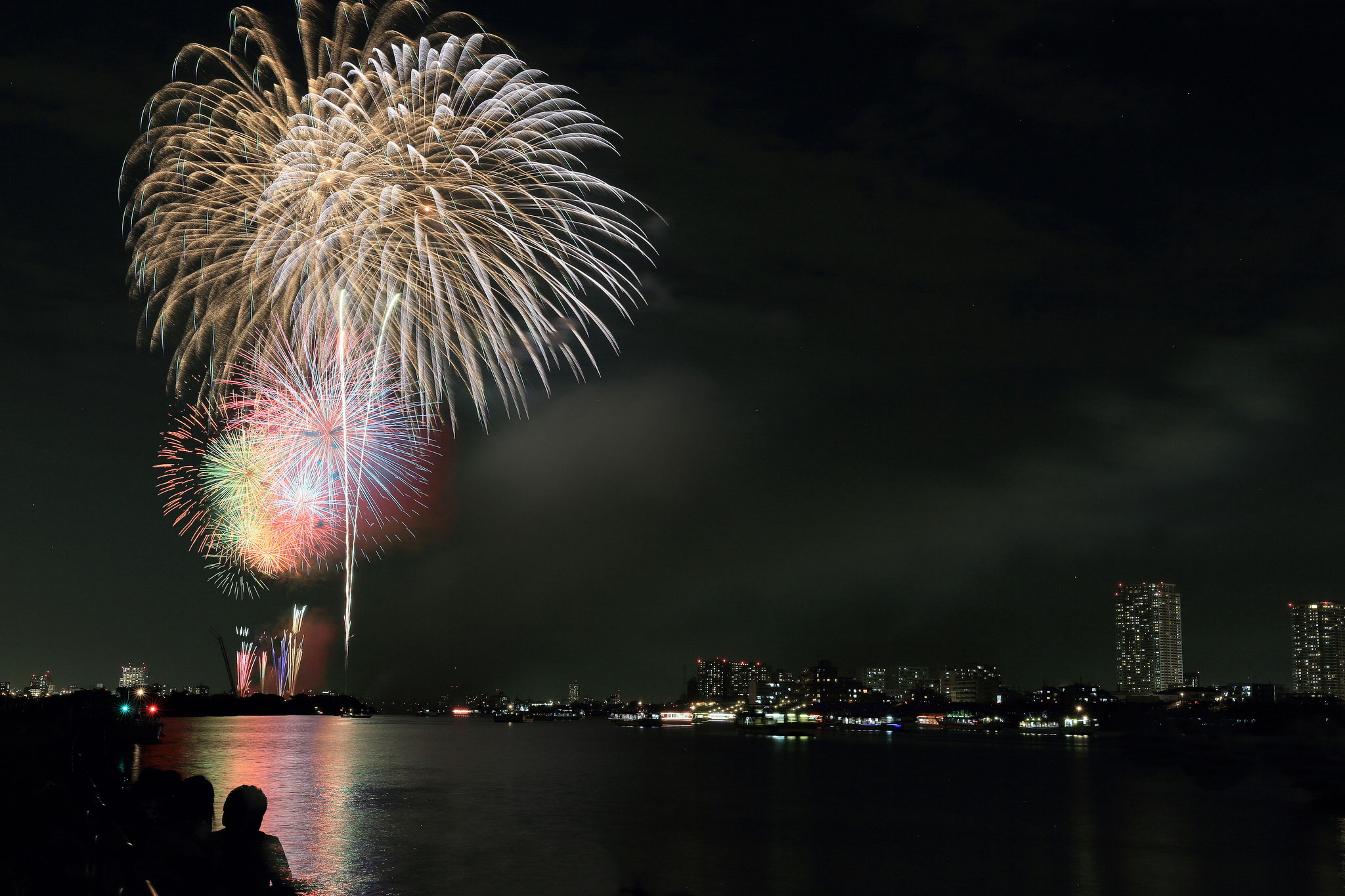
photo credit: cate♪
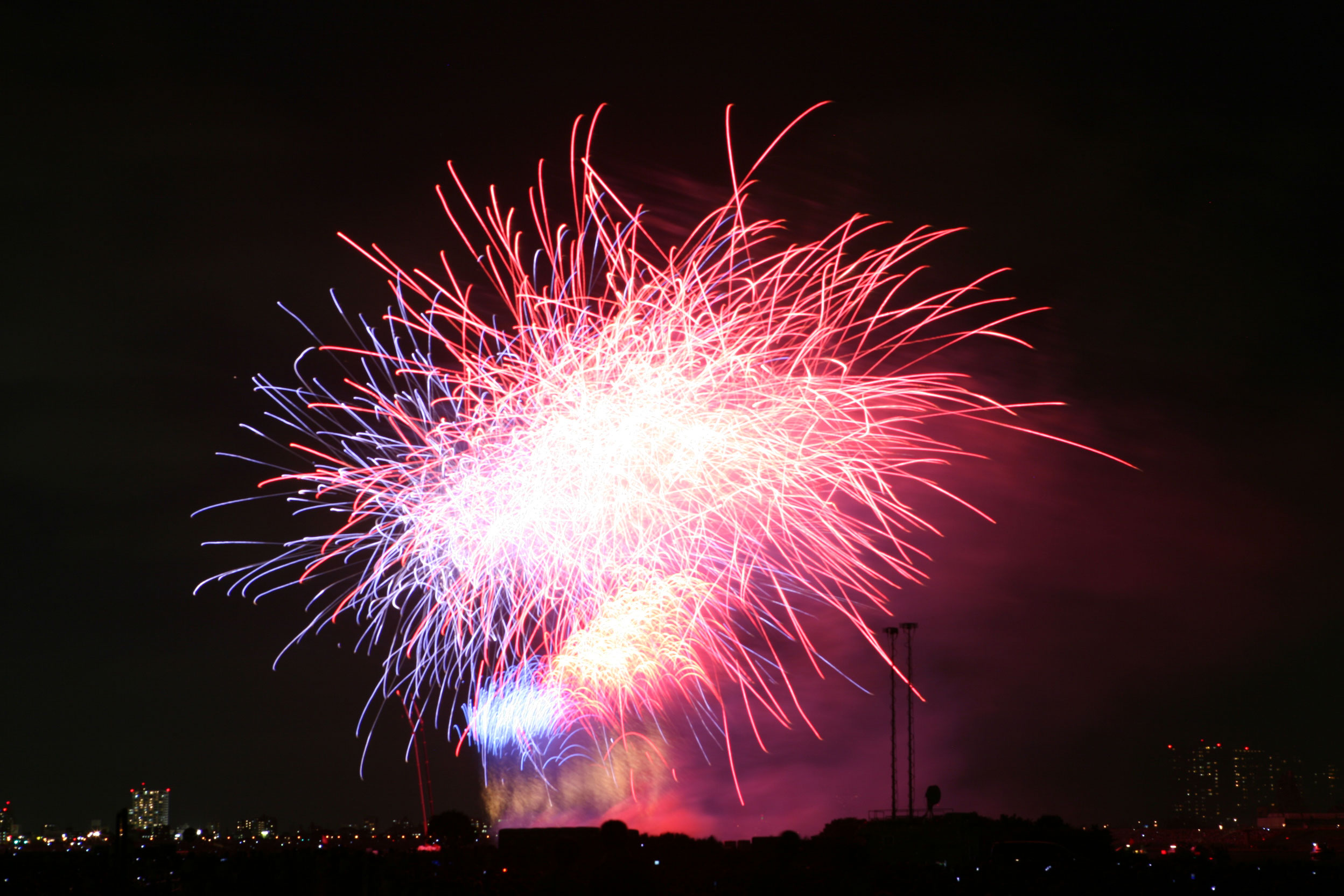
photo credit: Luke Kaneko
Japanese Tradition: Gion Matsuri
Gion Matsuri: an unique experience
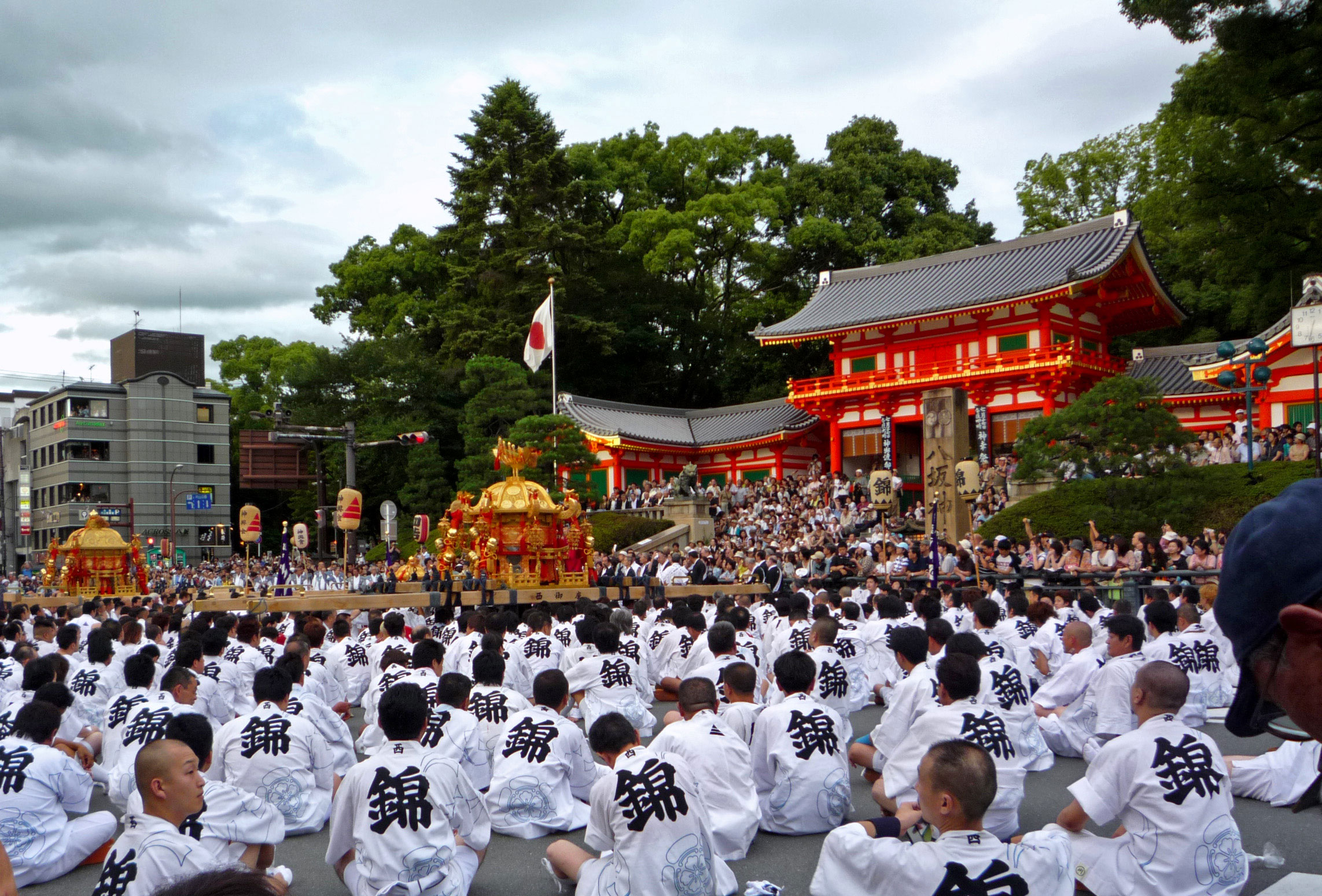
photo credit: Daranice
The Gion Festival or Gion Matsuri (祗園祭), this is how it has been called since the Meiji era, takes its name from the famous Kyōto area, Gion, Higashiyama district. It’s a religious celebration dedicated to the Susanoo God, also known as Takehaya Susanoo-no-Mikoto, worshiped in the Yasaka shrine.
Susanoo, God of the sea and storms, it’s also the God of the dead, as well as Amaterasu’s brother, from whom the Japanese Emperor’s family line is believe do descend.
Together with the Aoi Matsuri (May 15th) and the Jidai Matsuri (October 22nd), the Gion Matsuri is one of the three biggest religious festivals in Kyōto, and Japan as well. It is held every summer for the whole month of July. It is meant to calm the spirits of the dead and ask for protection over the city to the God so that he can keep illnesses and natural disasters away.
As you can imagine it’s a matsuri full of events. The most important and attractive are the Yamaboko Junkō ( 山鉾巡行, float’s parade) and the Mikoshi Togyo (神輿渡御, parade of the devine palanquins). Both this events are held between July 17th and 24th, when the festival reaches its climax.
One of the main reasons for the spectacularity of this festival is surely the size of the floats, especially the ones called Hoko. They can even be 25 meters high with a weight of over 10 tons that can move thanks to wheels about 2 meters of diameter. Every float is rebuilt every year from scratch, and then destroyed at the end of every festival. All the pieces are held together without the use of screws, as tradition wants.
But let’s move ahead with order...
A little bit of history

photo credit: kyotodeasobo.com
Tradition says that Gion Matsuri was born in 869. Since a century or so, the Imperial court had moved from Nara to Heiya-kyō (today’s Kyōto) and it was dominated by the Fujiwara family.
It is said that during a plague, the Imperial court decided to hold the first goryōe (御霊会), a purification ritual in the small Shinsen'en shrine. You need to know that at the time the city was situated in a very swampy area, very hot and humid. High concentration of people together with the absence of a proper drainage system made it easy for waste waters to contaminate clean waters. It’s not difficult to imagine that illnesses like malaria, smallpox, flu and dysentery became widely present. However, in ancient Japan the cause of all this was said to be something else entirely.
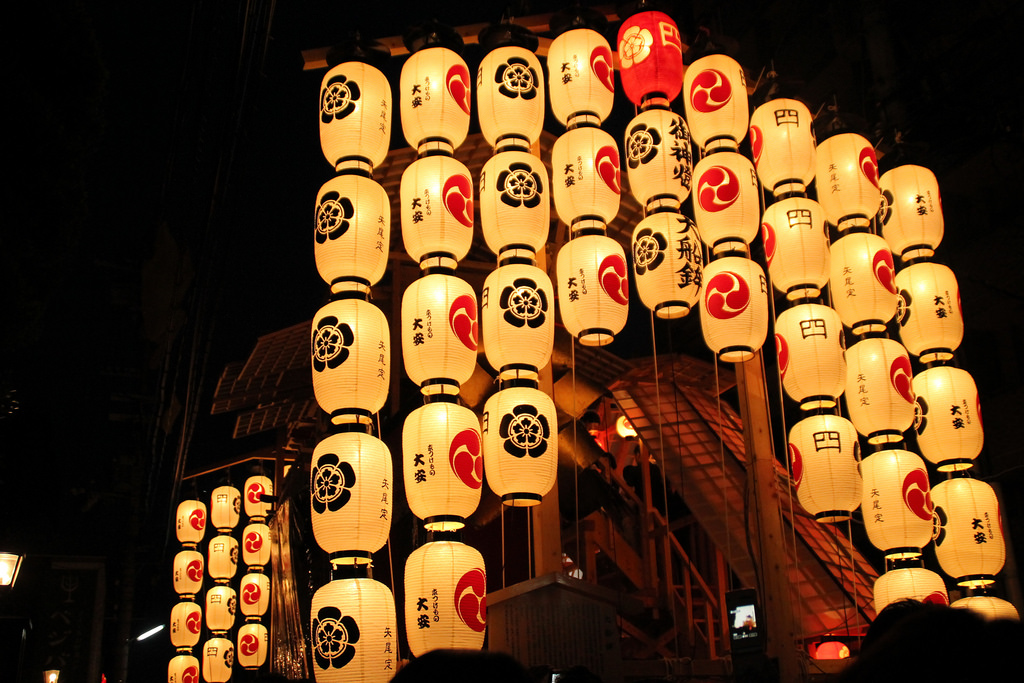
photo credit: japancheapo.com
According to the prediction of a master priest, the real cause of the plagues were devious spirits, identified in the ghosts of prince Sawara Shinnō and his companions. They, accused of the murder of the noble Fujiwara no Tanetsugu, died professing their innocence till the last moments.
The first goryōe was held while trying to calm the spirit by invoking the Susanoo God. Furthermore, the noble Urabe Hiramaru raised 66 spears, one for each Japanese region, so to enclose the evil spirits inside and purify the capital.
It was here that the custom of bringing three mikoshis, or divine palanquins, into procession was born, and it was also decided that a goryōe had to be head every time that a plague or illness was spreading.
Everything was accompanied by other celebrations and joyful moments.
Until 970, when it was decided that the Gion Goryōe (祗園御霊会) had to be held every year.
Afterward, starting from the Muromachi period, the event was enriched with the typical floats, the yamaboko (山鉾), also parading along the streets of the city. These were built thanks to the collaboration of the merchant class that in this very period lives a moment of success after centuries of denigration. Floats were adorned with decorations that became richer and more sophisticated year after year.
In other words, the parade also became a way to show off the richness of the merchant class.
In spite of some small interruptions (during the Ōnin war (1467-1477) and during World War II (1941-1945) ), the festival still lives today and can be proud of more than a thousand years of history.
Celebrations
Celebrations that,as we said, go on for the whole month of July, involve all the different areas of the city.
It kicks off on July 1st, where a ceremony called Kippuiri (吉符入) is held at the Yasaka shrine, Here, representatives of all the districts of the city in charge of the organization of the festival pray so that the it can proceed smoothly and with no incidents.
On July 2nd, at the Town Hall of Kyōto, takes place a lottery headed by the mayor of the city, through which the order of the floats for the parade is decided. Still, opening the procession is always duty of the Naginataboko (長刀鉾).

photo credit: heterophyllum
On July 10th, starts the preparation of the mikoshi (神輿), three palanquins that will house three small shrines dedicated to Susanoo. At the same time, a few buckets are immersed from the Shijō bridge into the sacred waters of Kamo river to draw the water that will be used to wash the mikoshi. In the late afternoon there’s also a parade with the exhibition of paper lanterns of traditional manufacturing that will be used to receive the God.
Also on the 10th, starts the building of the floats and walking along central streets of Kyōto you’ll be able to see theme slowly taking shape by the hands of their wise builders.
The days between the 14th and the 16th are those immediately preceding the main celebration. July 14th is known as yoi-yoi-yoi-yama (宵々々山), the 15th as yoi-yoi-yama (宵々山) while the 16th is called yoi-yama (宵山). The same goes for July the 21st,22nd e 23rd. During this days, starting from 6:00 p.m, the streets closed to traffic overflow with visitors and tourists voices. Here you can walk around vending stands, under the light of the paper lanterns always kept alive, admiring the yamabokos.
And it is also in this days that ancient families of the town open up their window so that people passing by can admire ancient treasures guarded for generations.
On July 15th, the imitaketate (斎竹建) and the yoimiya-sai (宵宮祭) are held. The first one is a ritual during which bamboo truncks are put together in square shape to delimit the area of the procession and protect it from contamination. On the other hand the yoimiya-sai is held at Yasaka shrine, and durig this ritual the spirit of the god is transferred into the 3 portable mikoshi that have already been purified.
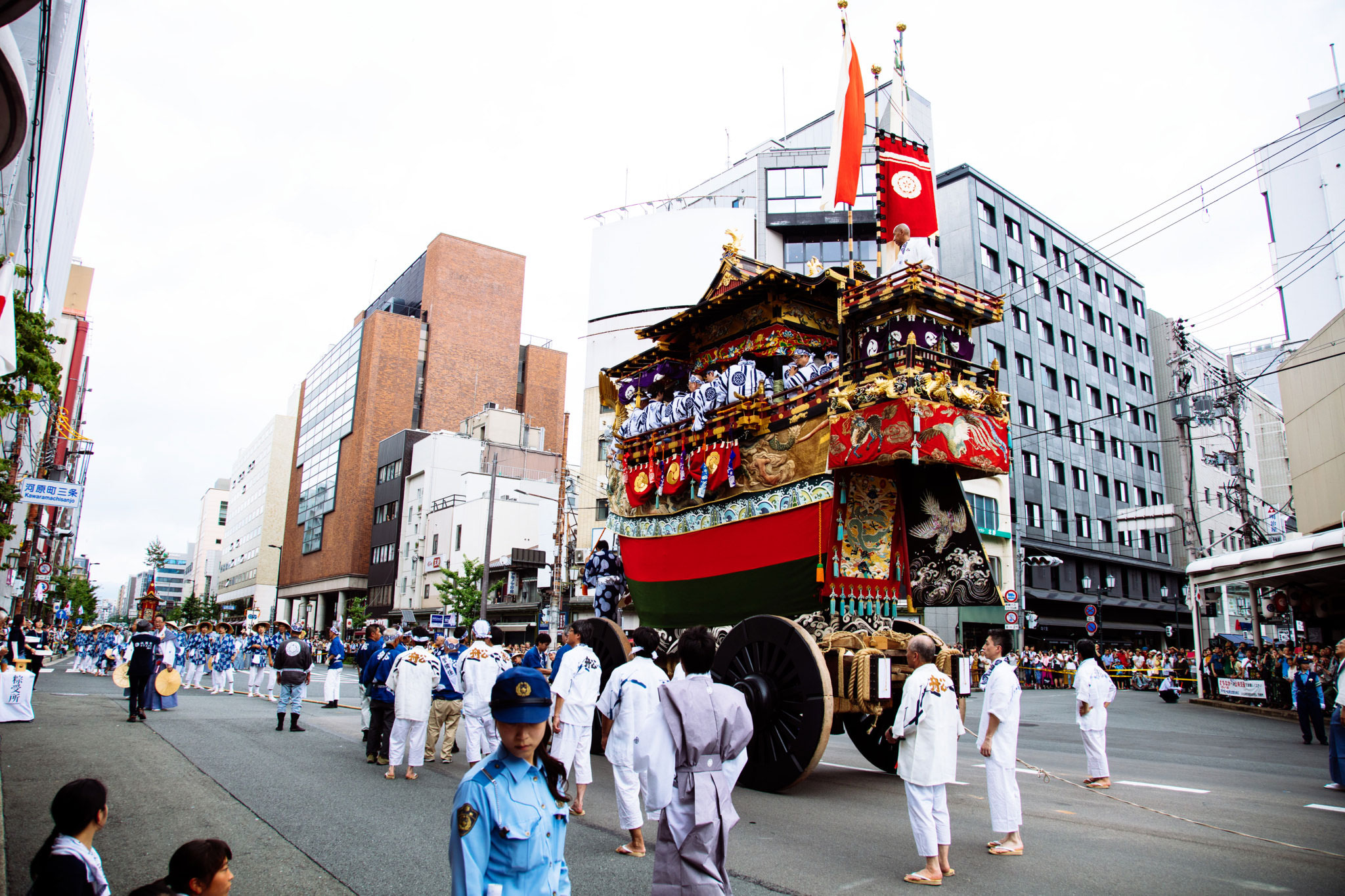
photo credit: Tomomi Onishi
In July 16th the musicians from all the floats go to the temple to pry for good weather the following day, and all is accompanied with music and dancing events along the way.
July 17th is the long awaited day in which the festival reaches its climax. It is the moment of the Yamaboko Junkō, the great floats parade. Floats are divided into 2 groups, yama 山 (mountain) and hoko 鉾 (spear). The opening group it that of the 9 hoko floats, and they symbolize the 66 spears used by Urabe Hiramaru to drive away the evil spirits. The second group is that of the 23 yama floats, smaller than the hokos, that carry life-size representations of important and famous personalities.
Every hoko carries musicians that accompanying the procession with their music.
Kon-kon chiki-chin, kon-kon chiki-chin… This is the distinctive sound of the Gion Matsuri, a traditional rhythm dating back to the Edo period.
And along the parade a profusion of many different dancers and acrobats make it even more joyful and lively. Obviously each and every one of them is dressed in colorful and rigorously traditional clothes.
Has said before the parade is lead by the Naginata-boko, called after the naginata (typical Japanese spear) that springs up from its top, and that is said to have the power to drive away evil spirits and plagues. The original Heian naginata had been forged in metal, but the one we can admire today is made of bamboo.
It is on the Naginataboko that a chigo (稚児) is carried, a young child dressed up in rich, traditional clothes with a golden phoenix-shaped headgear. This child has the duty to represent the God during the festival.
The chosen one, usually selected from the most powerful and important merchant and commercial families of the town, has to undergo a long preparation period before he is allowed to take on this role. Weeks of purification rites and complete isolation, away from everything that could contaminate him, including women. He is not even allowed to walk on common ground but he is carried by men in charge of this duty.
He will have the duty to cut with a single blow a big sacred thatch rope. This is the Shimenawa-kiri (しめ縄切り), an act through which the divinity enters the human world severing the limit that devised the two worlds, and with this act the great celebration can officially starts.
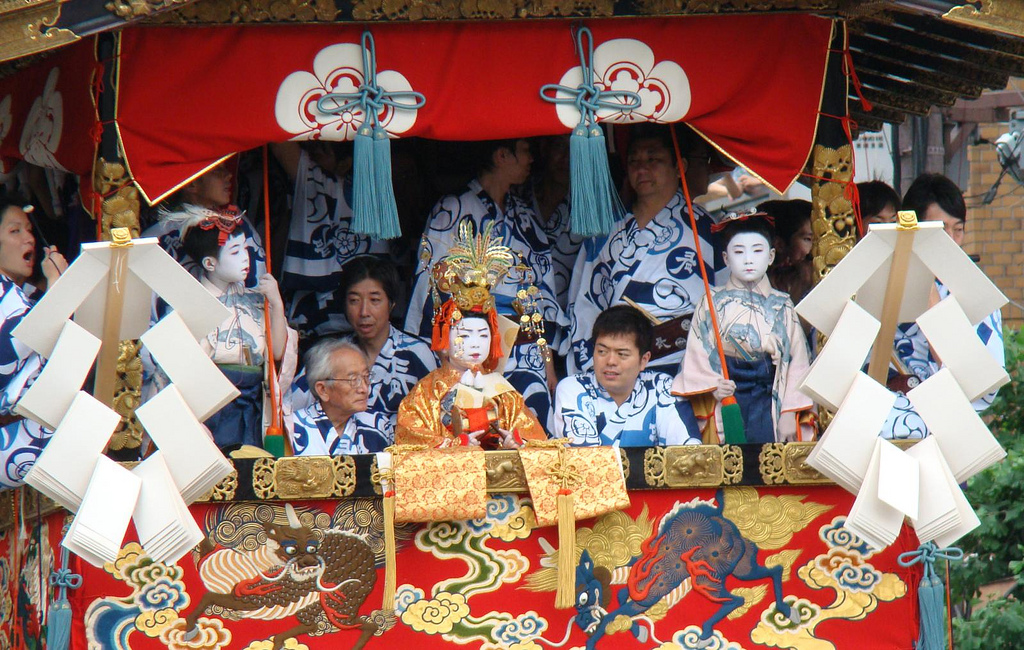
photo credit: picssr.com
In the late afternoon, takes place the mikoshi togyo, where the three mikoshis leave the temple. It is the long awaited Shinkō-sai (神幸祭), or the emerging of the divinity from the temple with its palanquins carried on shoulders around the streets of the city.
On July 24th this double procession is repeated and in the evening the three mikoshis are brought back to their temple. This is the moment of the Kankō-sai (還幸祭), through which the spirit of the God finally returns to the world he belongs to.
At the end of the parade the floats are immediately dismantled and all pieces kept until the next festival.
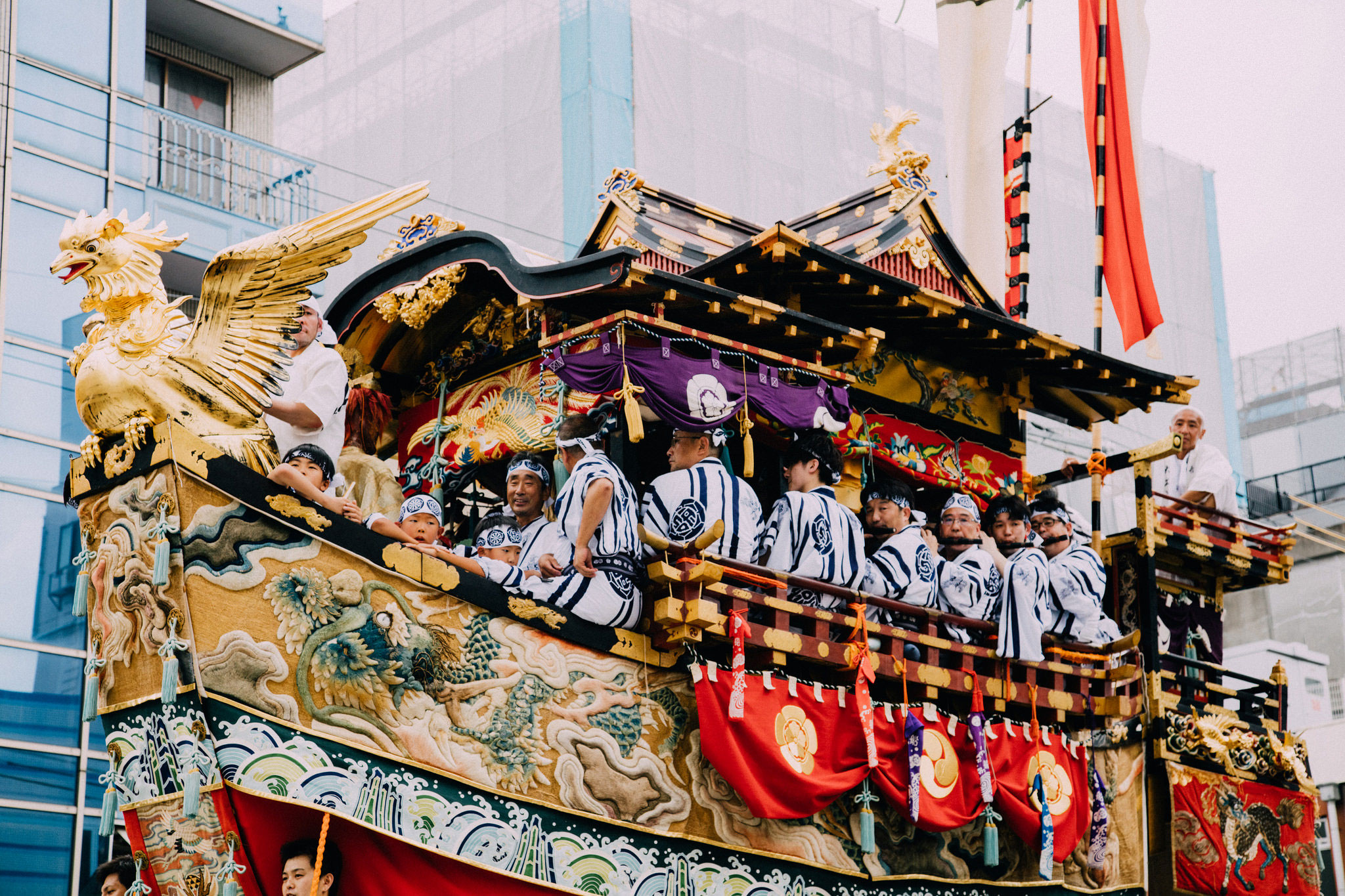
photo credit: Tomomi Onishi
On the same day takes also place the Hanagasa Junkō (花傘巡行), an event that, as suggested from the name, has flowers as its protagonist. In fact, it is written with the kanjis of hana (花) or flower, and kasa (傘) or umbrella. During the parade, the floats and all participants parading along the streets are all decorated with umbrellas and hats embellished with flowers.
The parade is opened by small mikoshis carried by young children, then follows a large parade of people in traditional clothes. There are representatives of social and cultural associations, musicians, dancers, acrobats and in particular some of the most famous geishas and maikos of the town. And they surely are the loveliest flowers displayed the event.
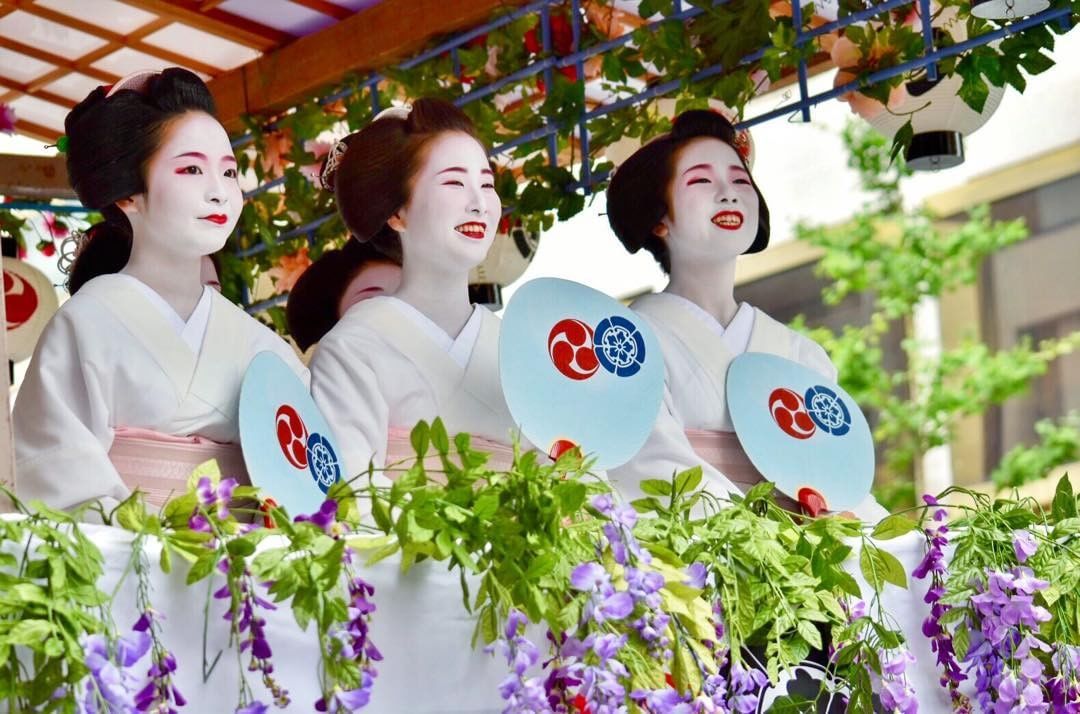
photo credit: geimei.tumblr.com
On July the 28, takes place the ceremony of the mikoshi-arai (神輿洗式),or the ritual of washing the mikoshis at Yasaka shrine, to purify the three palanquins, till next year.
If you are around don’t miss this moments. In fact, it is said that being hit by little splash of the water dedicated to the god brings good luck..
To mark the end of the Gion Matsuri there is the nagoshisai (夏越祭) festival, that is held every July 31st at Ekijin shrine.
Tied to the tori, the entrance gate that marks the beginning of the sacred area of the temple, there is a big thatch rope in the shape of a circle with 2 meters in diameter. It is the Chinowa (茅の輪).
Please do pass through it to be purified, and then you’ll receive a protection charm on with there’s written “Somin-shorai shison nari(蘇民将来子孫也) that means “I’m Somin Shorai’s descendant”. According to the legend, Somin Shorai was a simple man that one day happened to give hospitality to a traveler that had already been refused by a rich man. The traveler then reveals himself as a God and to thank him for his hospitality teaches him how to make lucky charms. Since then it is believed that this charms can push away catastrophe and thieves.
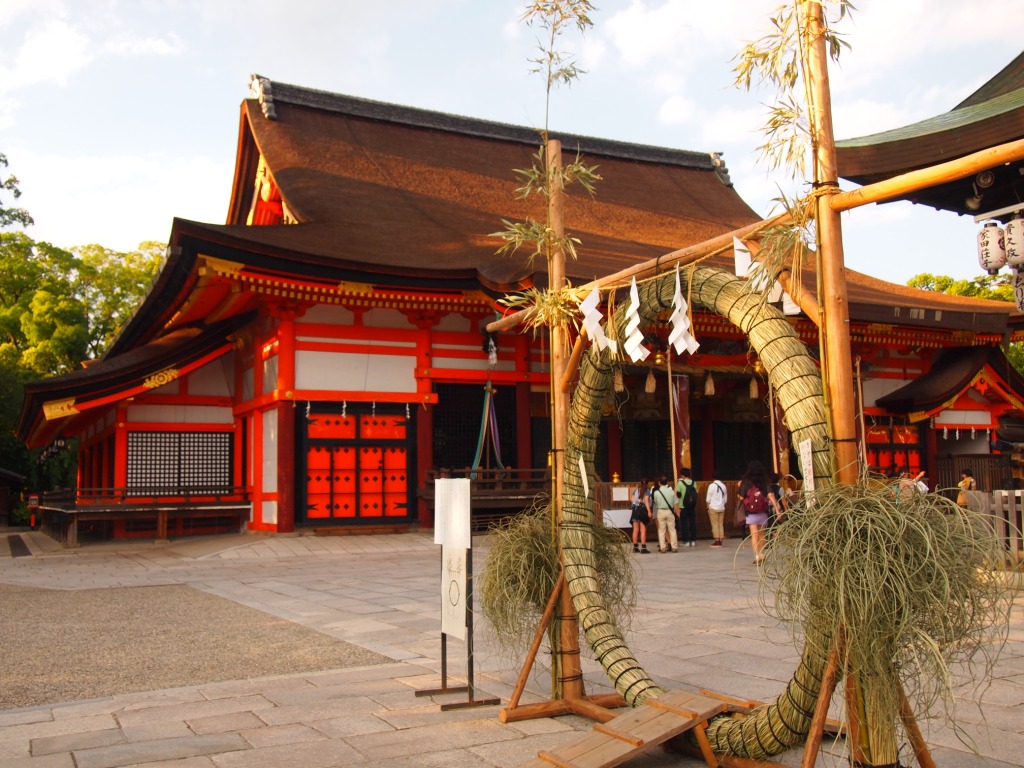
photo credit: kyoto-tabiya.com
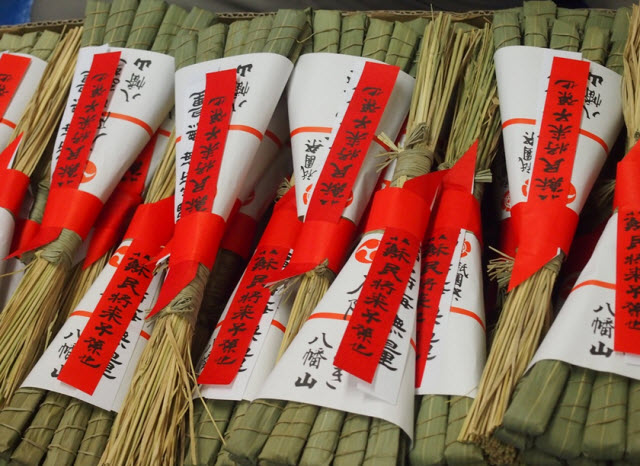
photo credit: kyotoiju.com
That of the Gion Matsuri in a long trip in which History and legend, religion and entertainment are entwined together. It is real a one-of-a-kind event.
And you? Have you ever been able to take part to it? We are waiting for your comments and experiences!
Japan Tradition: Hadaka Matsuri
The Hadaka Matsuri
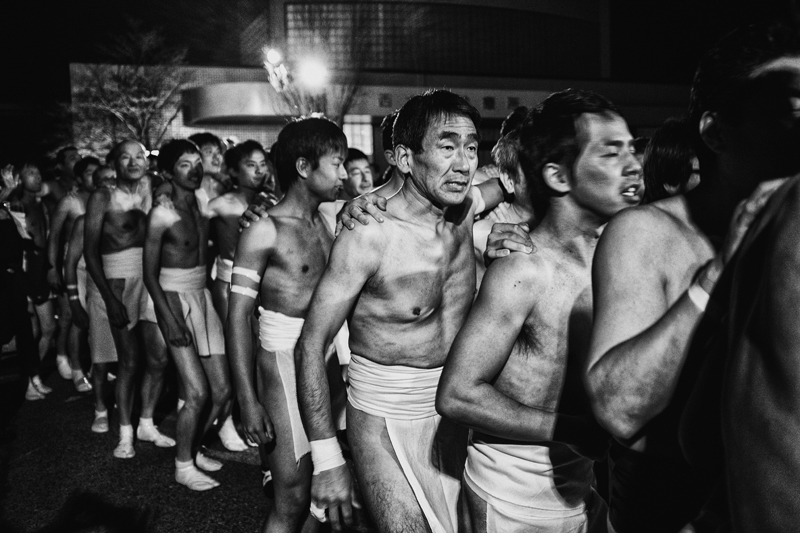
Even though nowadays nudity is not a shame anymore, in this part of the world, and not only here, it still is one of those topics usually considered tingly.
Nudity intrigues us, sometimes it upsets us, and it surely arouses our curiosity.
The Land of the rising sun is a place rich of costumes and traditions often in contrast with each other. Let's consider for example their obsession with good manners or the extreme attention to their privacy. But also their strong sense of decency and the districts dedicated to night pleasures and endless fun.
What better chance to 'bare ourselves', if not during the Hadaka Matsuri.
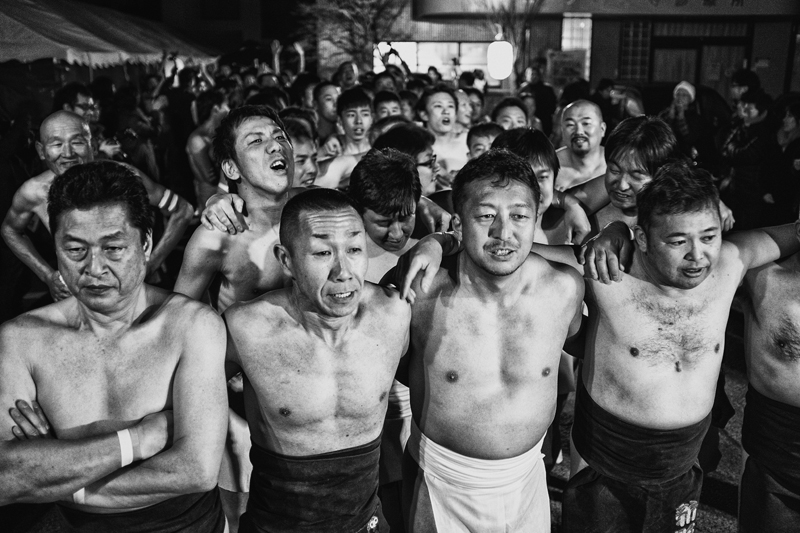
Before we focus on this particular celebration I would like to take a step back. In Japanese language the word matsuri indicates a traditional festival. These festivals usually coincide with an event that attracts thousands of people in streets and parks.
The Origin
A great number of festivals took their origin in Chinese traditional festivals. However these festivity tended to disappear as time passed by, mixing with, or even being replaced by typical Japanese costumes. In fact, in Japan, the idea of festival or celebration derives from the deep bond that this community has with nature. This bond can be traced in the traditional religion of the country, the Shintoism.
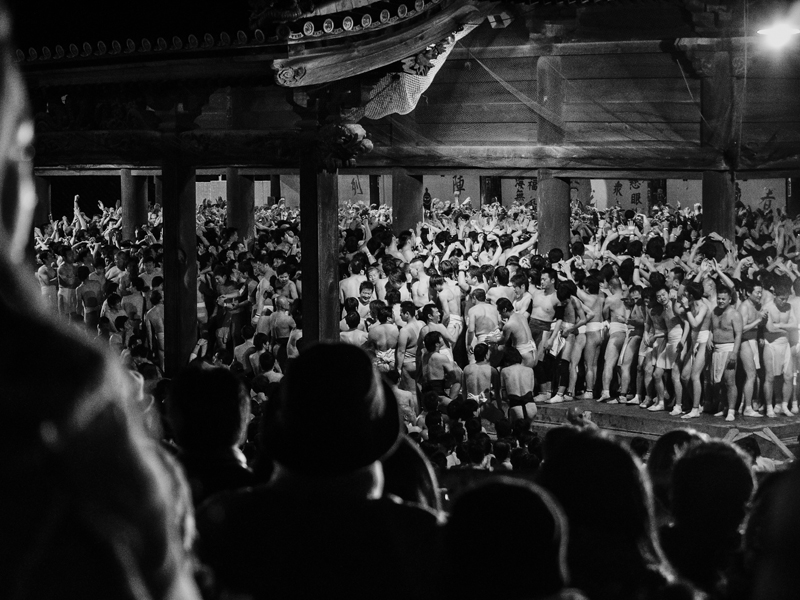
'Hadaka Matsuri' literally means 'Festival of the naked man'. During this celebration the approximately 9.000 participants, all men, wear nothing but the traditional Japanese loincloth, the fundoshi. for those who want to, they can wear a kimono too. But among all participants there are also men that decide to wear nothing at all.
This festival takes place in many different parts of Japan. The most important is the one that takes place in Okayama (city where this festival originated from), on the island of Honshu. It takes place in the Saidai-ji shrine, and in fact the full name of this festival would be "Saidaiji Eyo Hadaka Matsuri". As it a religious celebration it is absolutely forbidden to bring or drink alcohol. Also, men with tattoos can take part in it, but only if they cover them with a band.
The Hadaka Matsuri has ancient origins. It is said that it can traced back in 767 d.C, when worshipers competed to receive protection charms made of paper, the go-o, thrown to them by a priests.
Hadaka Matsuri and Nudity
According to some evidences, it is believed that those who were able to obtain one of these protection charms would be blessed with good fortune for one year.
Moreover, the collective belief saw in nudity something able to absorb evil forces and misfortune. In fact, the ones that caught the charm were also proclaimed 'Naked man' or 'Naked Spirit' (shin-otoko). All those that wished to get rid of their misfortune tried to touch him.
But still today it is not easy to 'touch' the fortunate man because of the many participants in this festival. Even for frequent participants it might take many years before they are able to touch him.
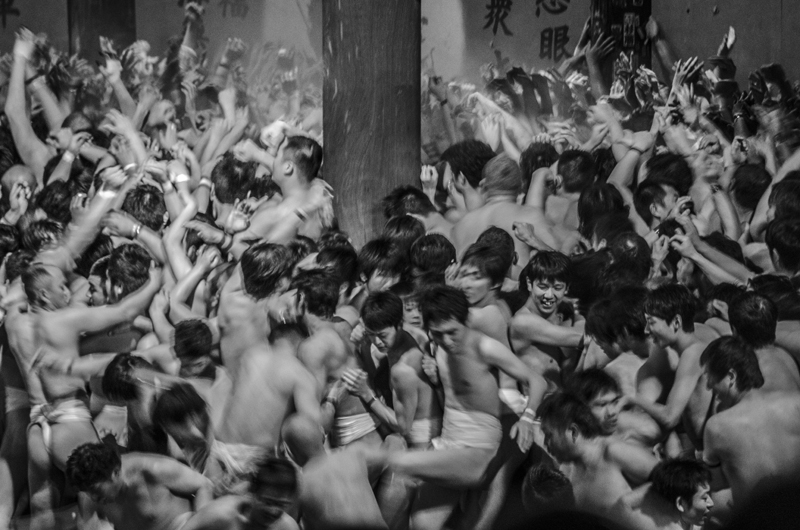
As time passed by, priests realized that the go-o made in paper did not last for long. In fact, they ended up being destroyed right because of the crowd that tried to catch them. Later, they were replaced by wooden sticks still used now and prepared by priests themselves through manual instruments.
And this is how nudity became a sacred tradition.
The Tradition
After a few days of isolation to keep vigil and pray, young participants move toward the shrine wearing only the fundoshi. They run while being hit by ice-cold jet of water. Reached the shrine, they have to catch one of the wooden sticks, the shingi. Priests throw these sticks to the crowd from the upper part of the Shrine. At 22:00, these charms are throw at them with almost all lights off to make it even more challenging. After catching the sticks, the first one that is able to put it in vertical position into a case filled with rice is proclaimed shin-otoko. The winner is blessed with one year of happiness and good fortune, and they will also receive a monetary prize.
Together with the shingi, priests throw 100 willow branches, and all those that are able to catch one will be granted with good fortune for the next year.
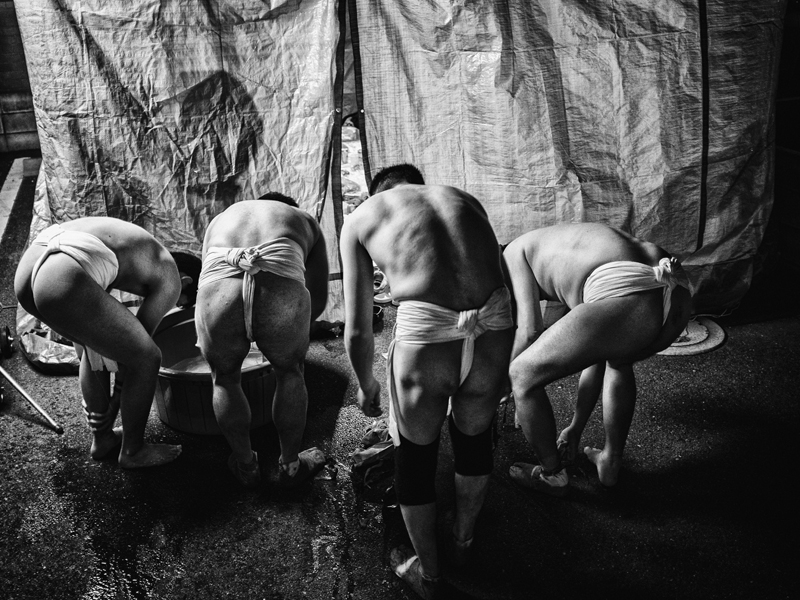
Less fortunate are the incidents that may happen due to the crowd. In the best case scenario they are 'only' bruises, broken noses or lips. For this reason that priests always ask participants to write down on their fundoshi (or on a piece of paper inside it) all useful information like: name, surname, address and blood type.
Fotografo : Kurt Gledhill










